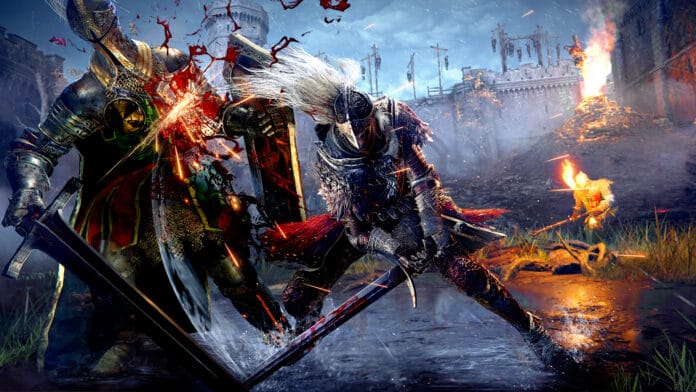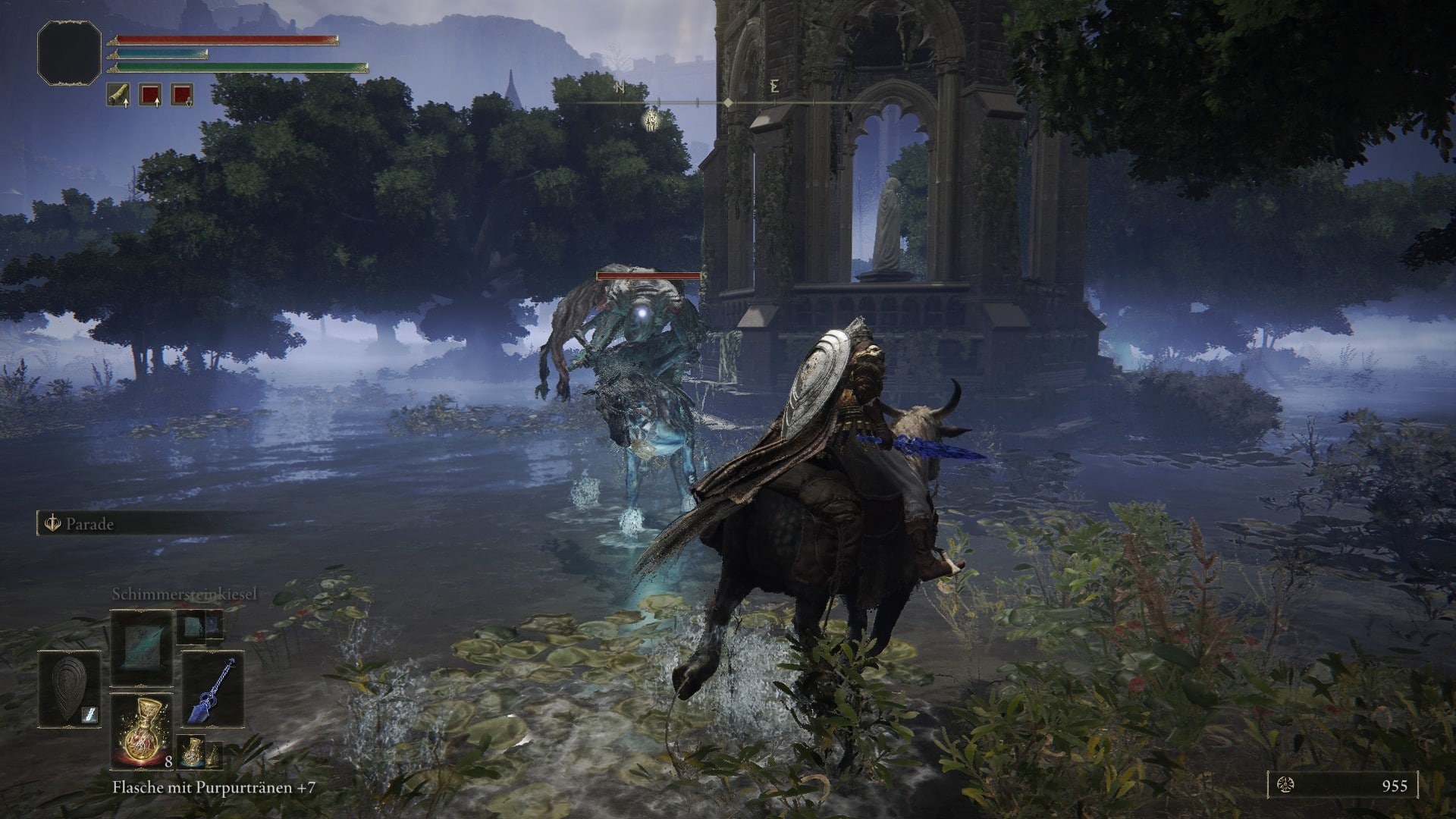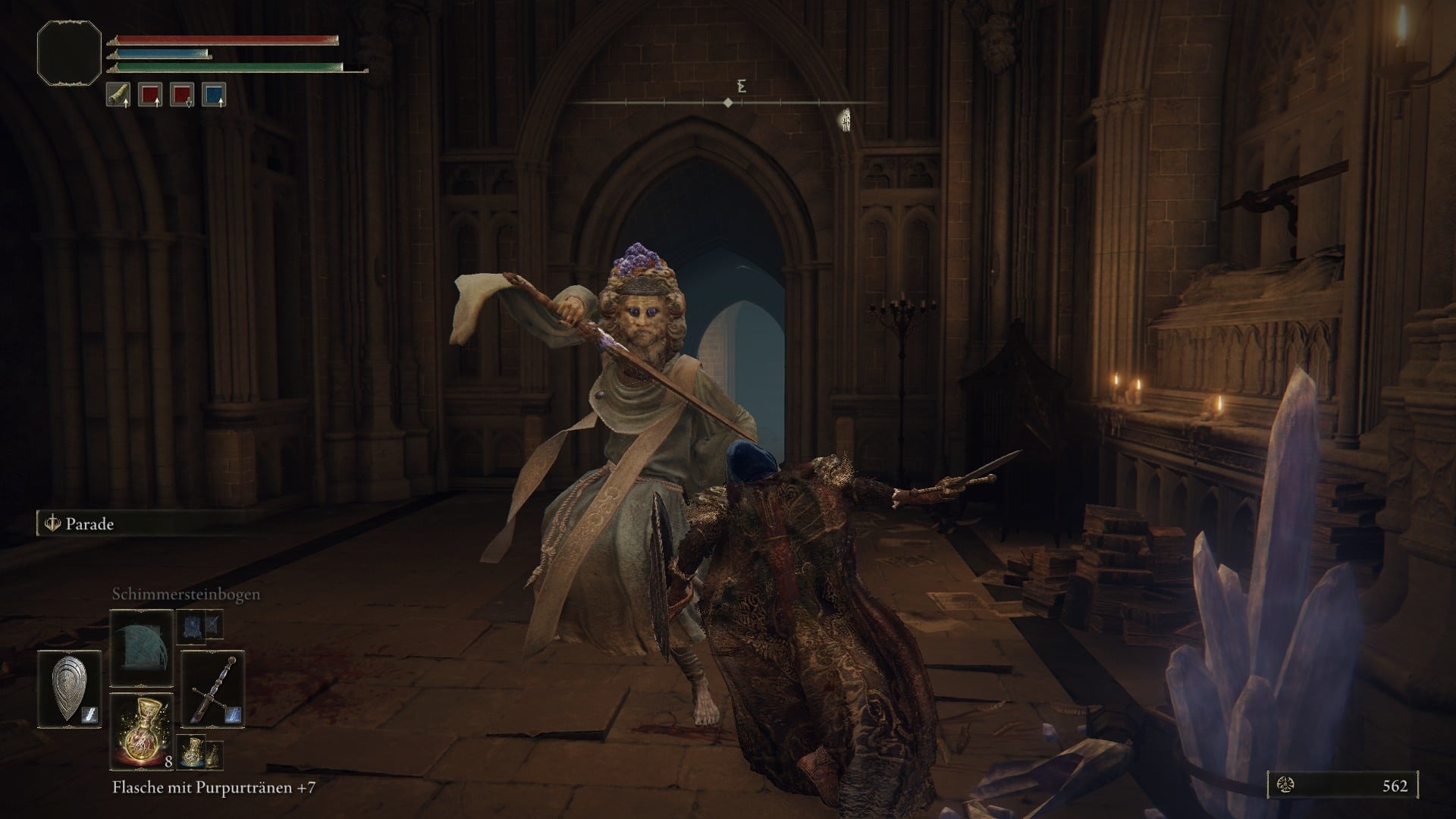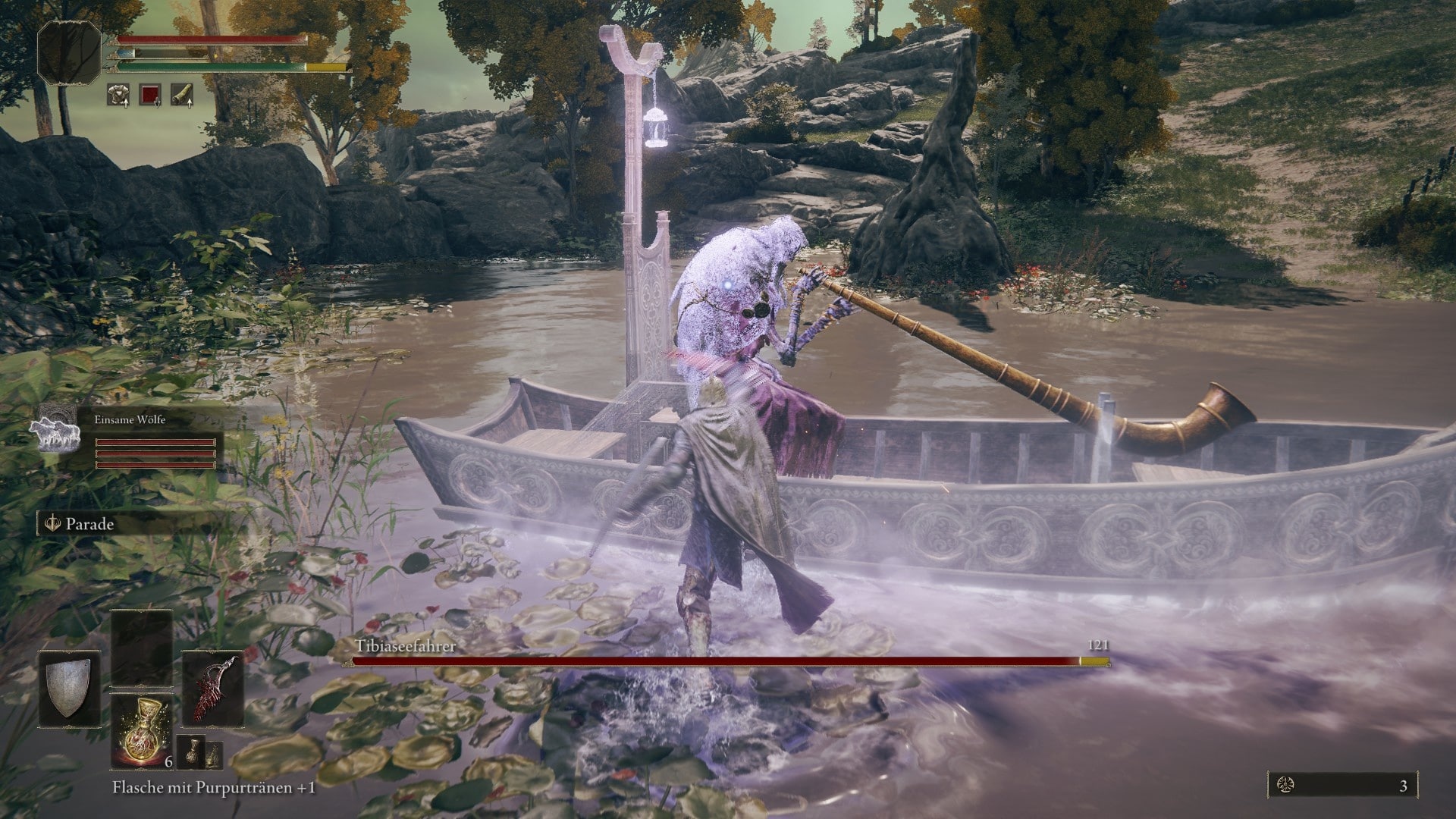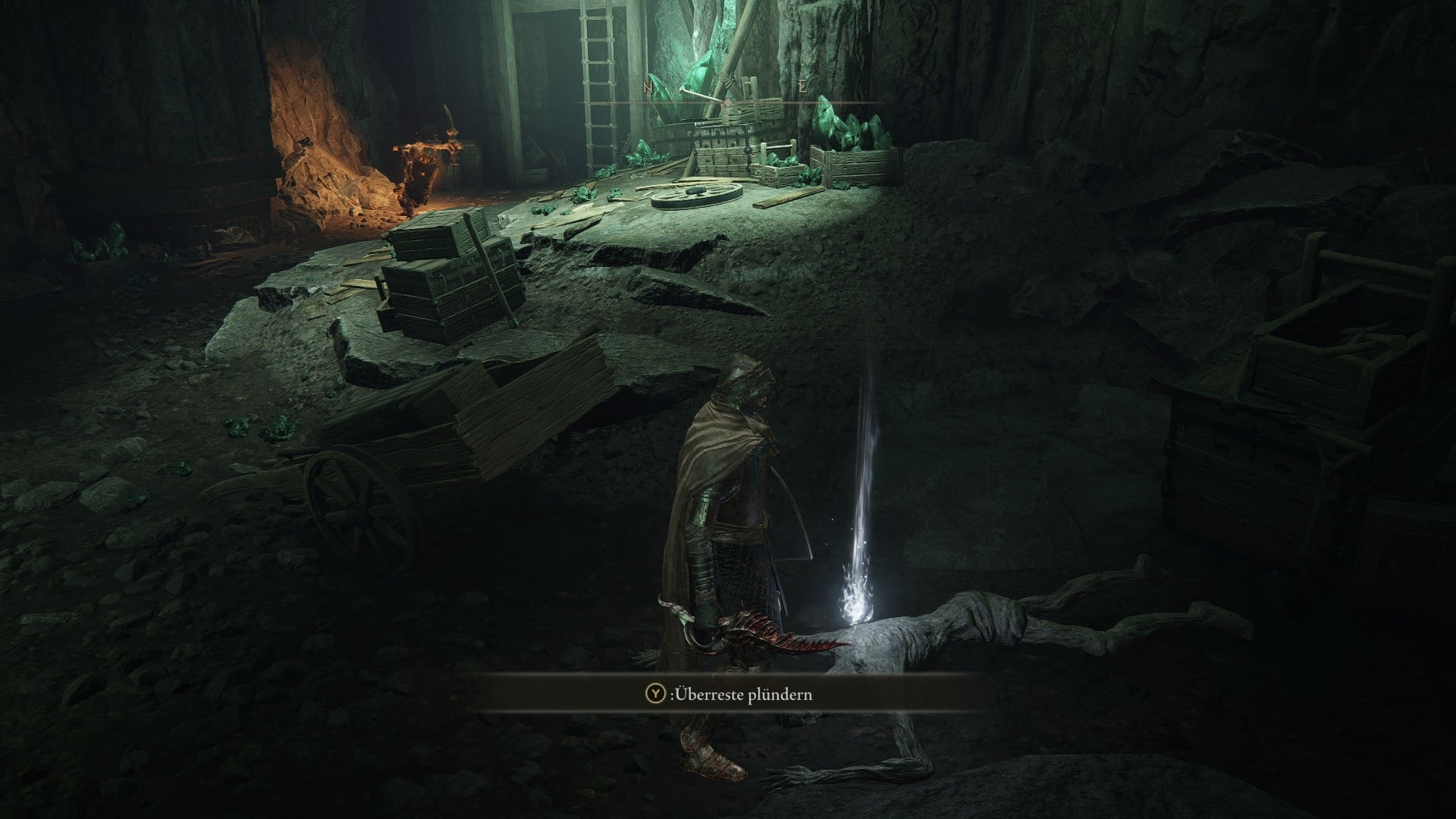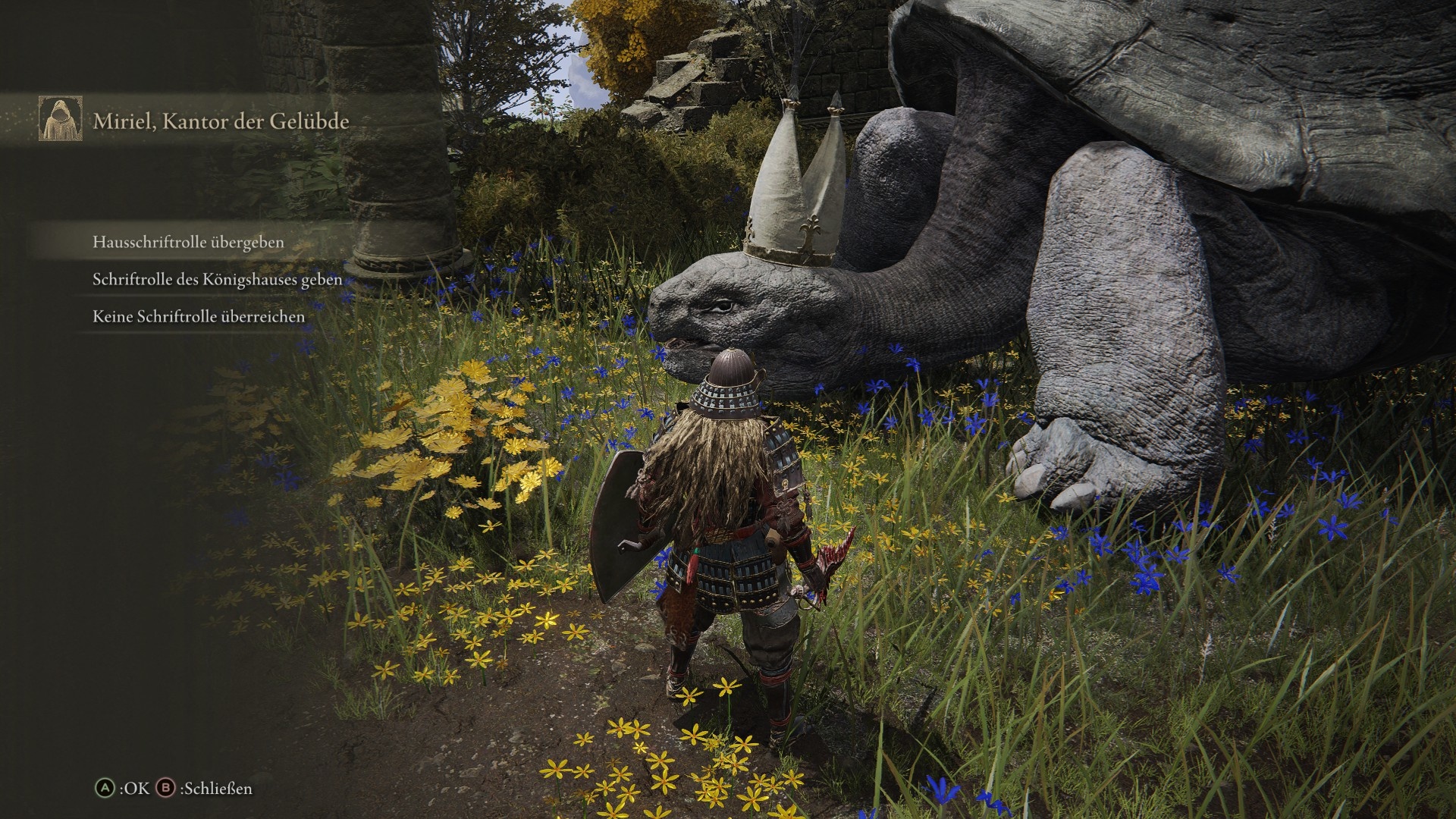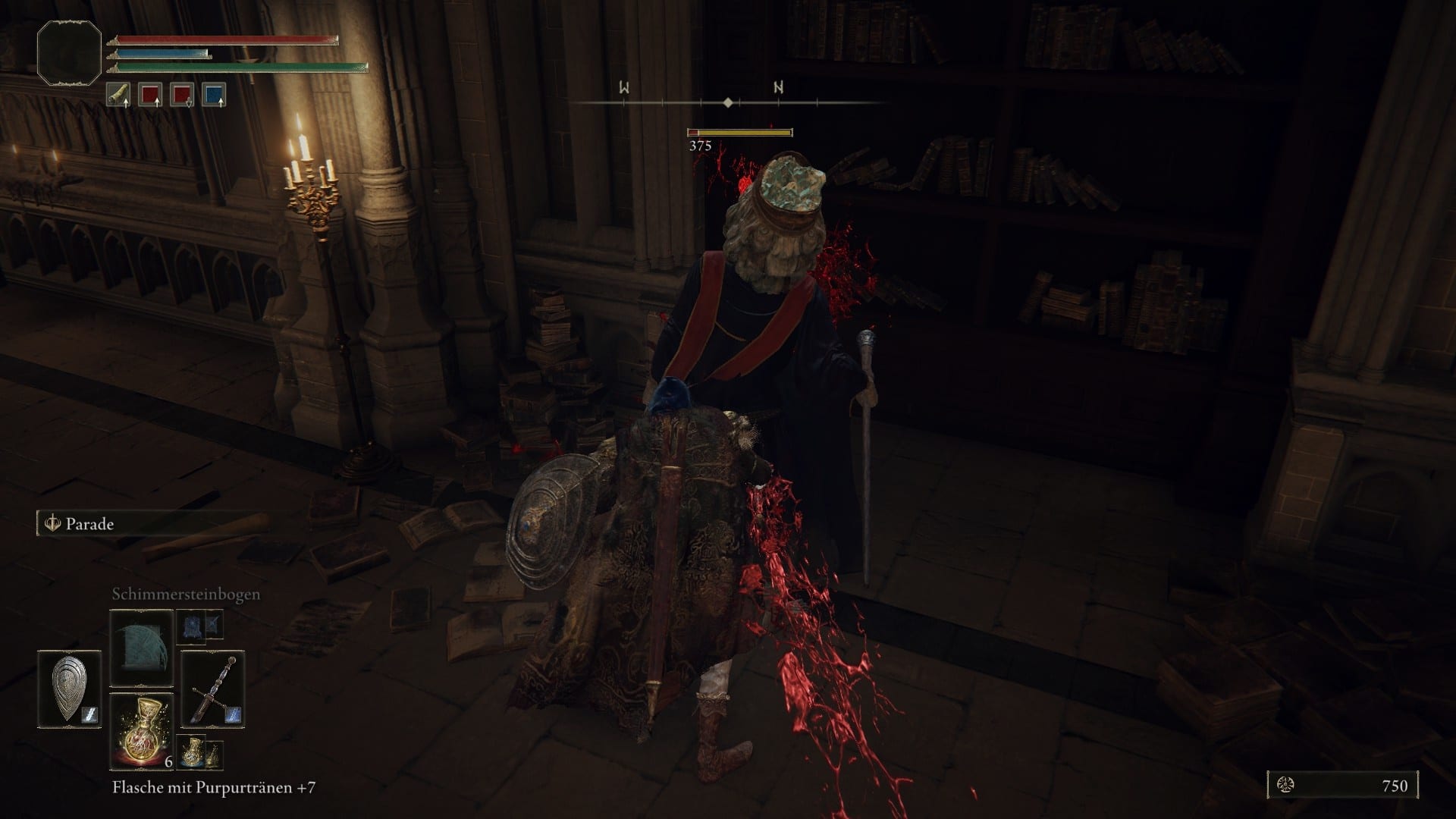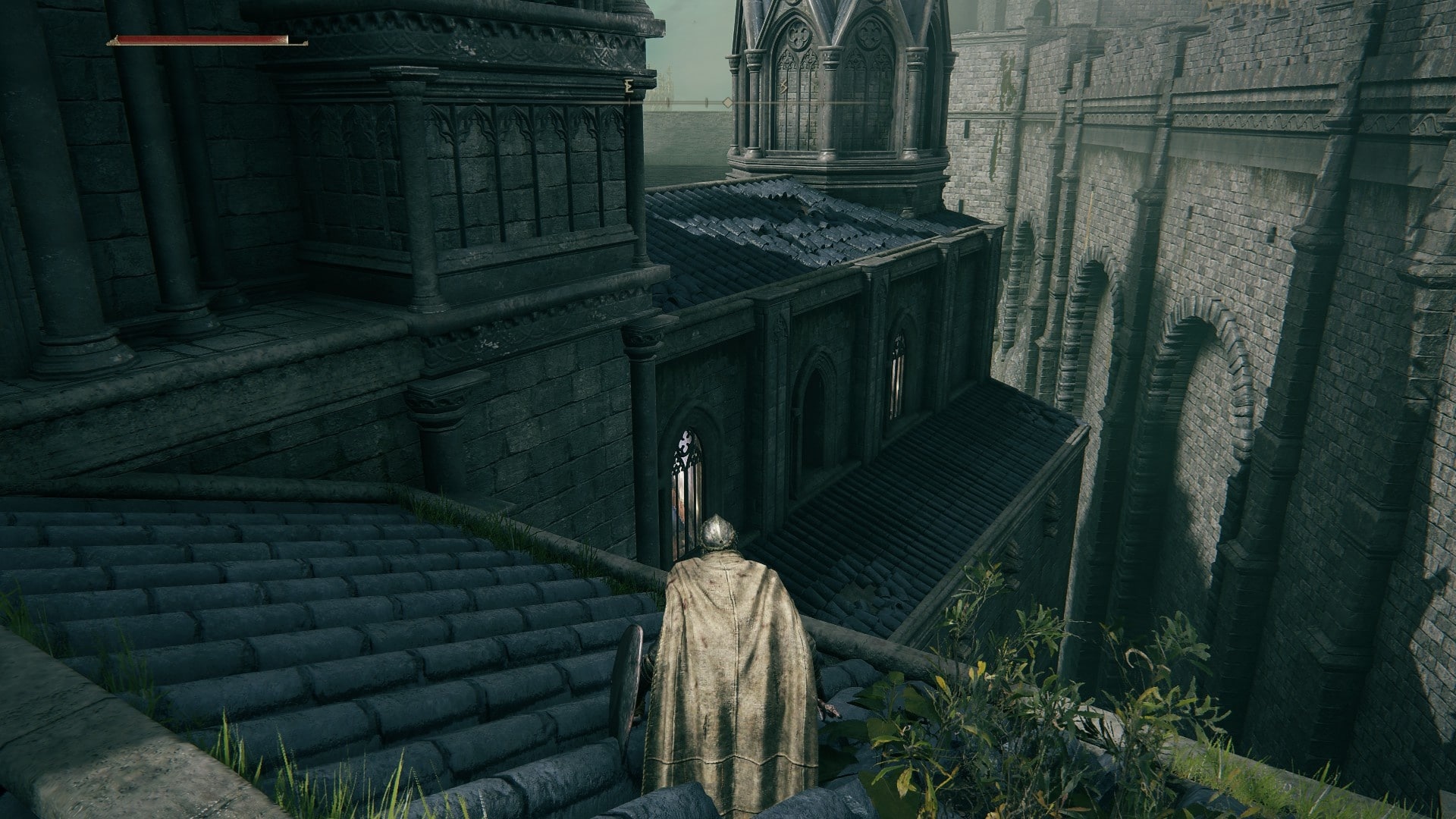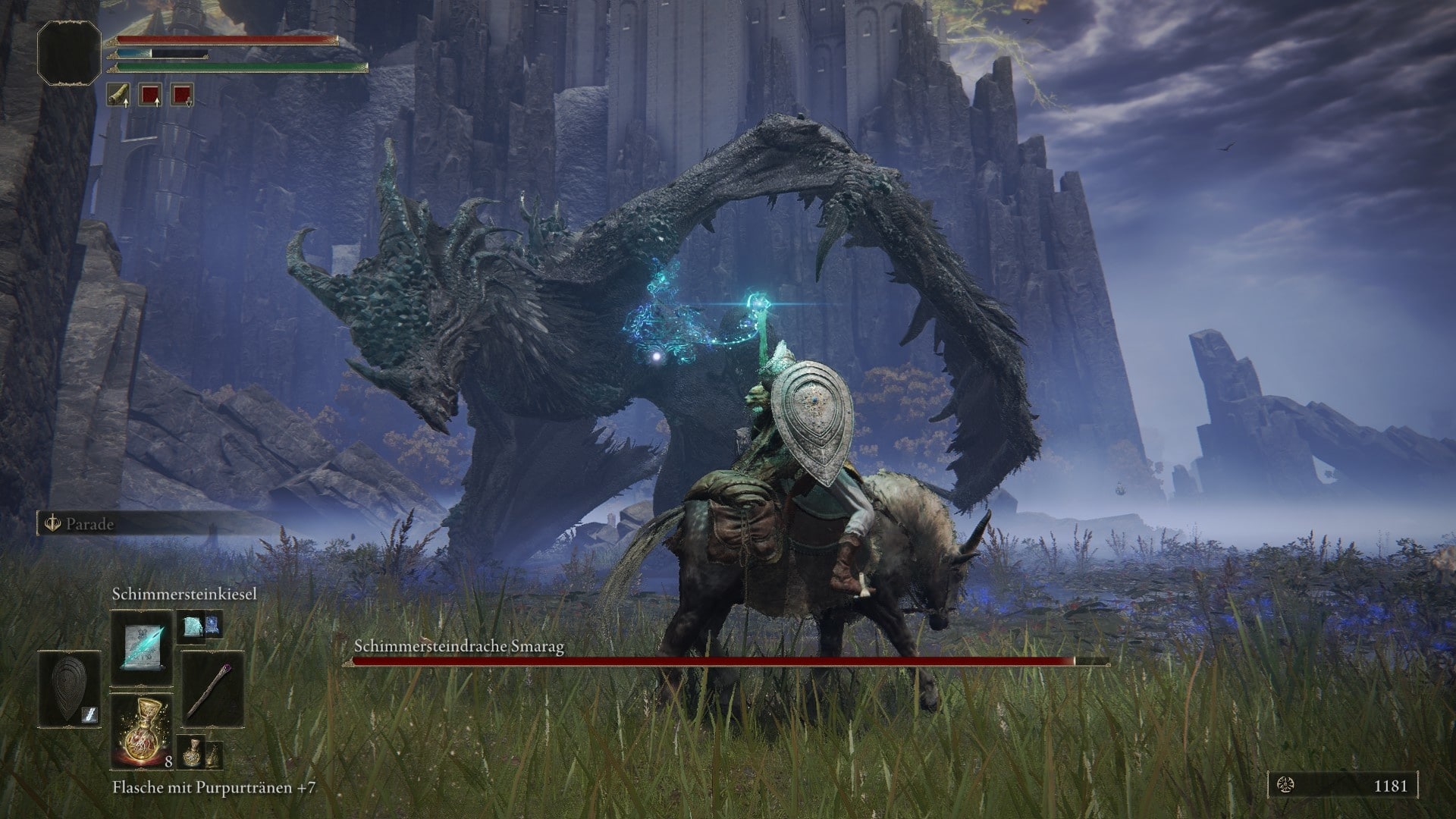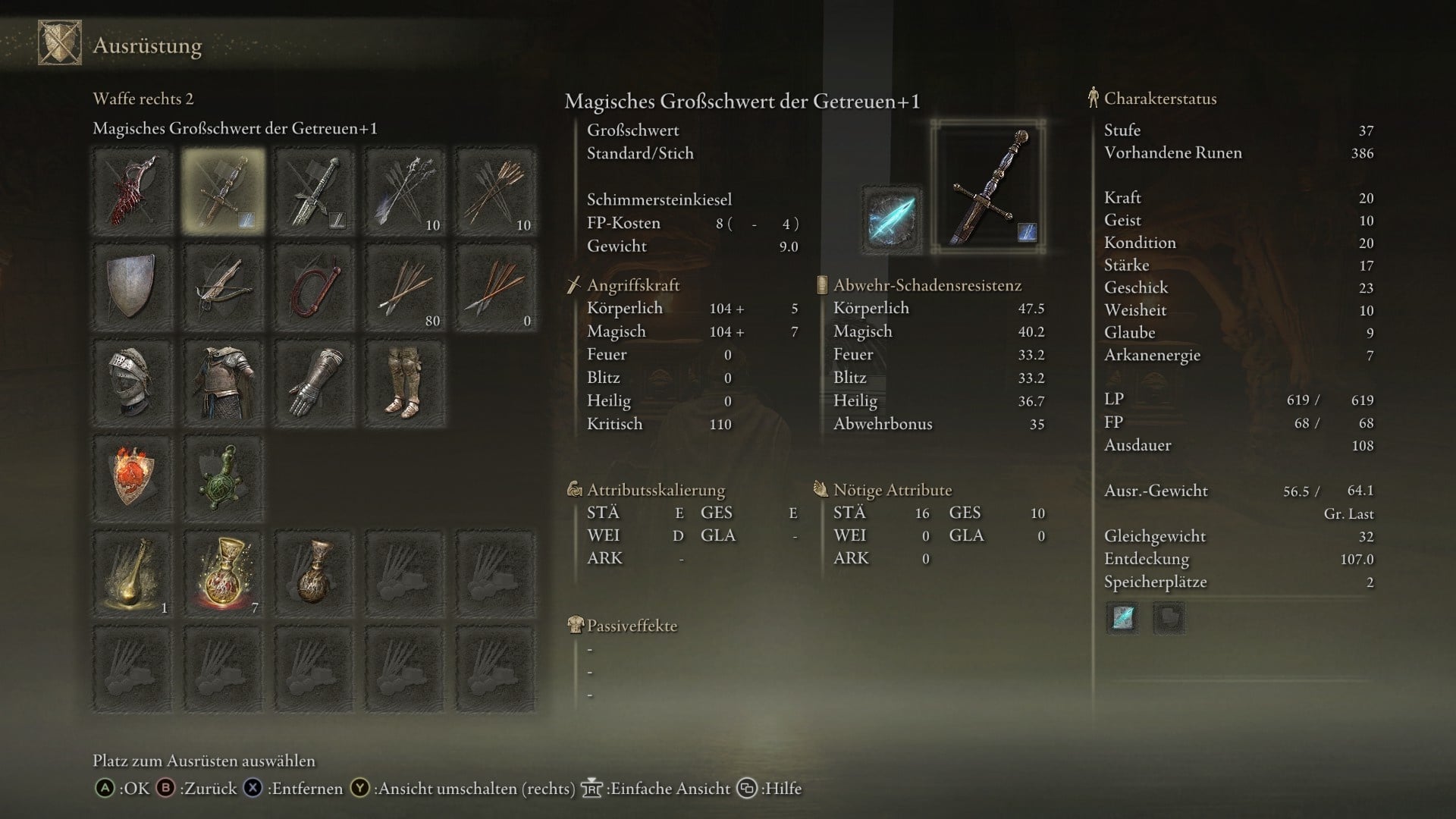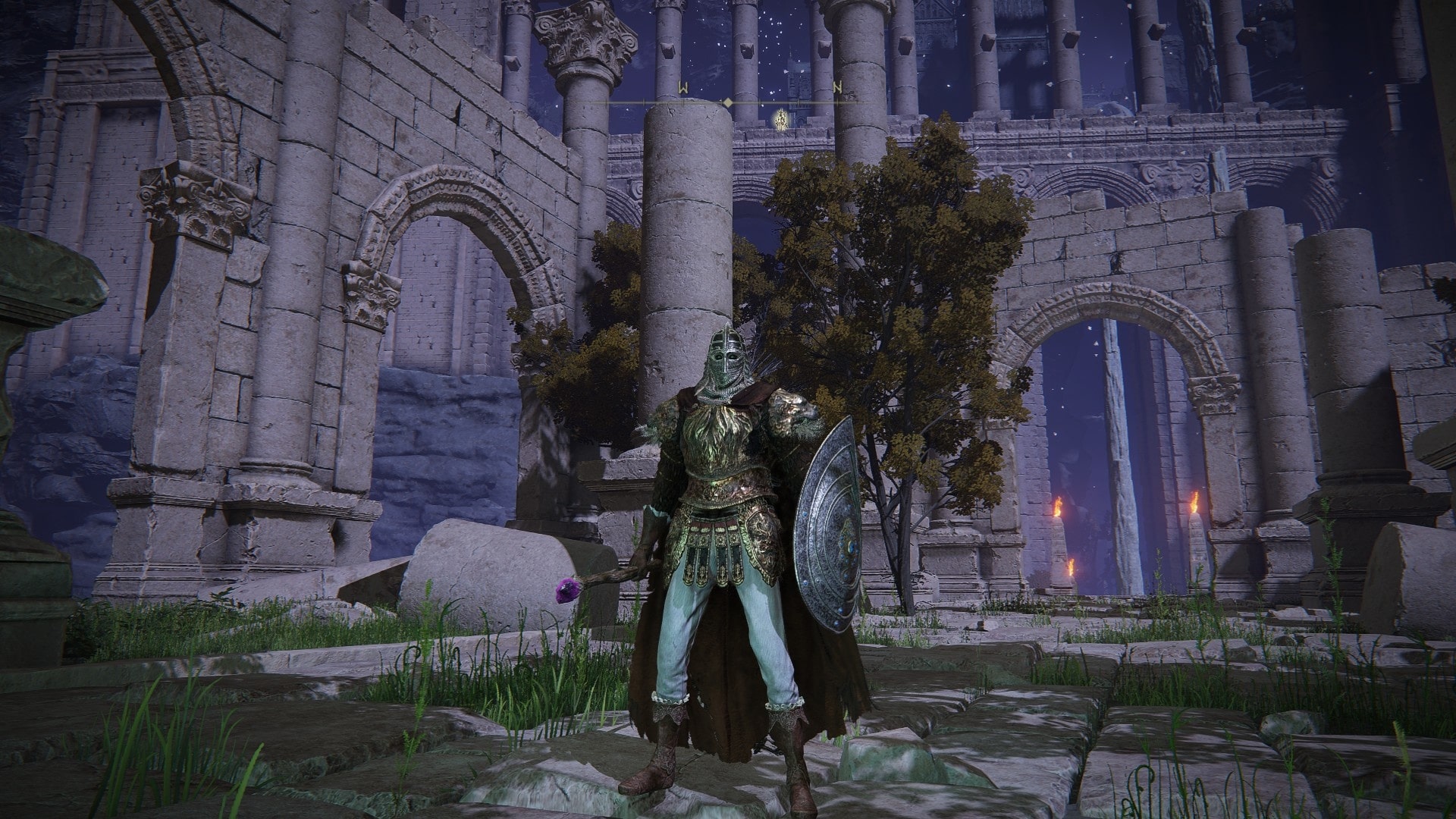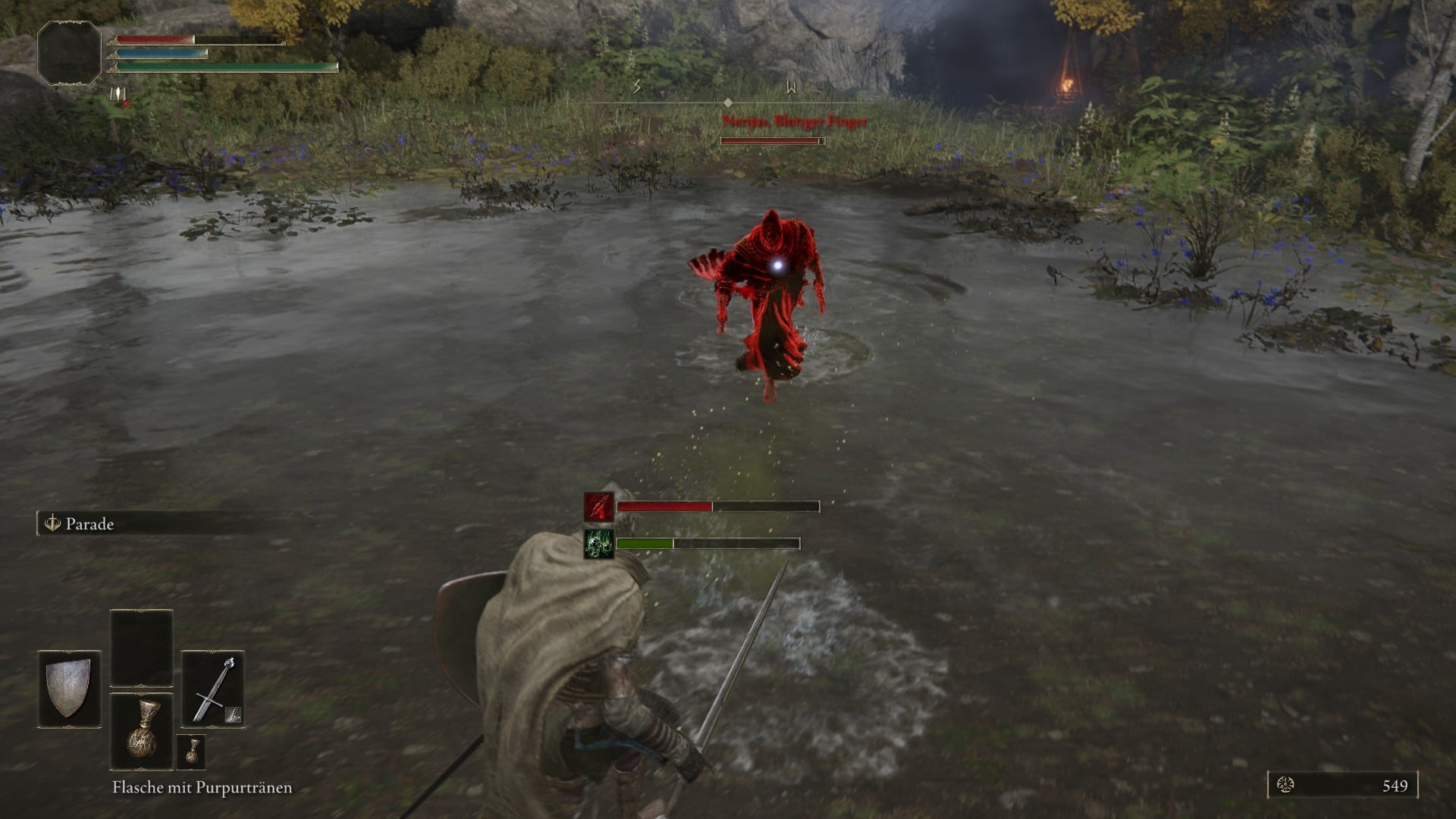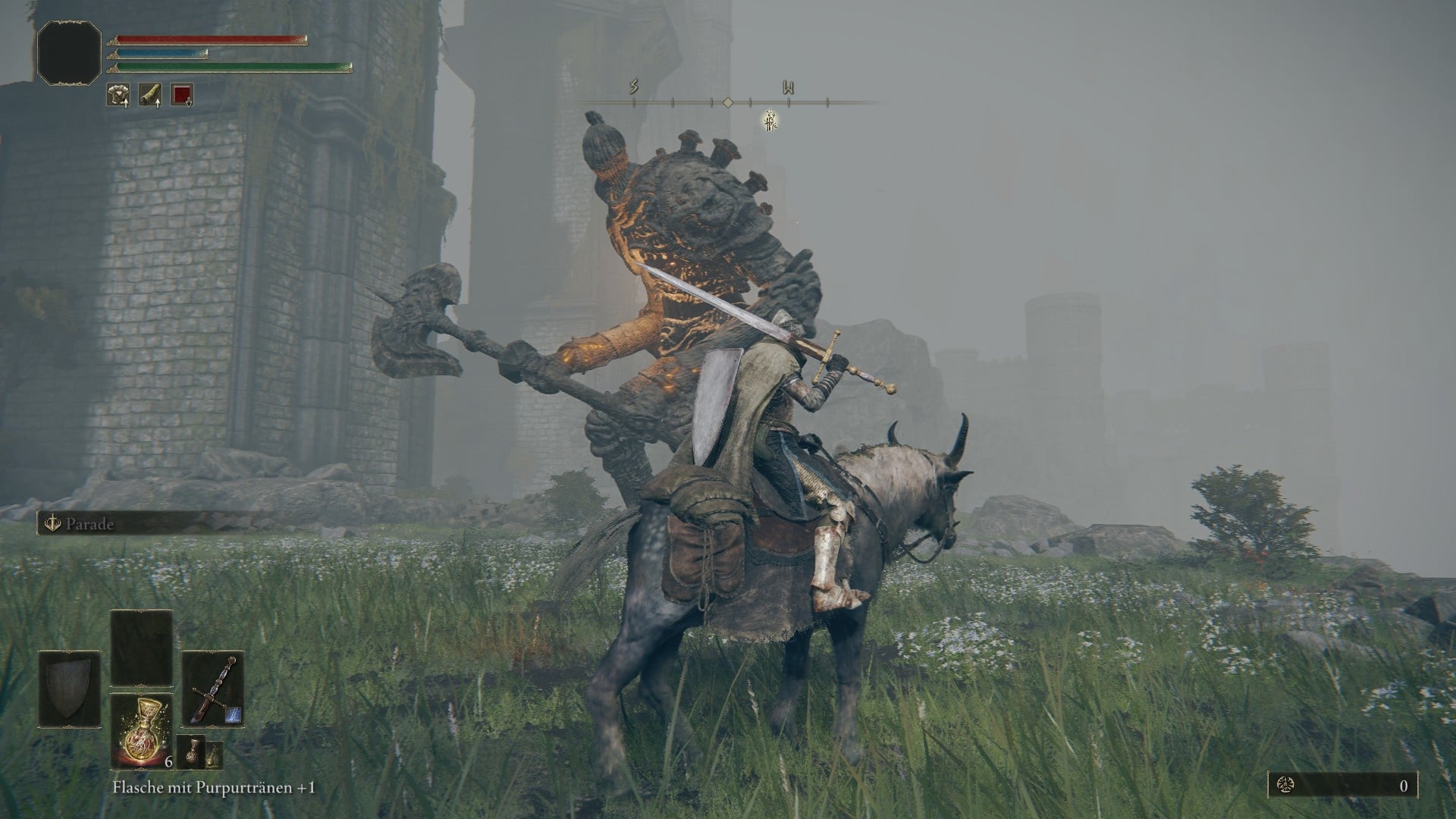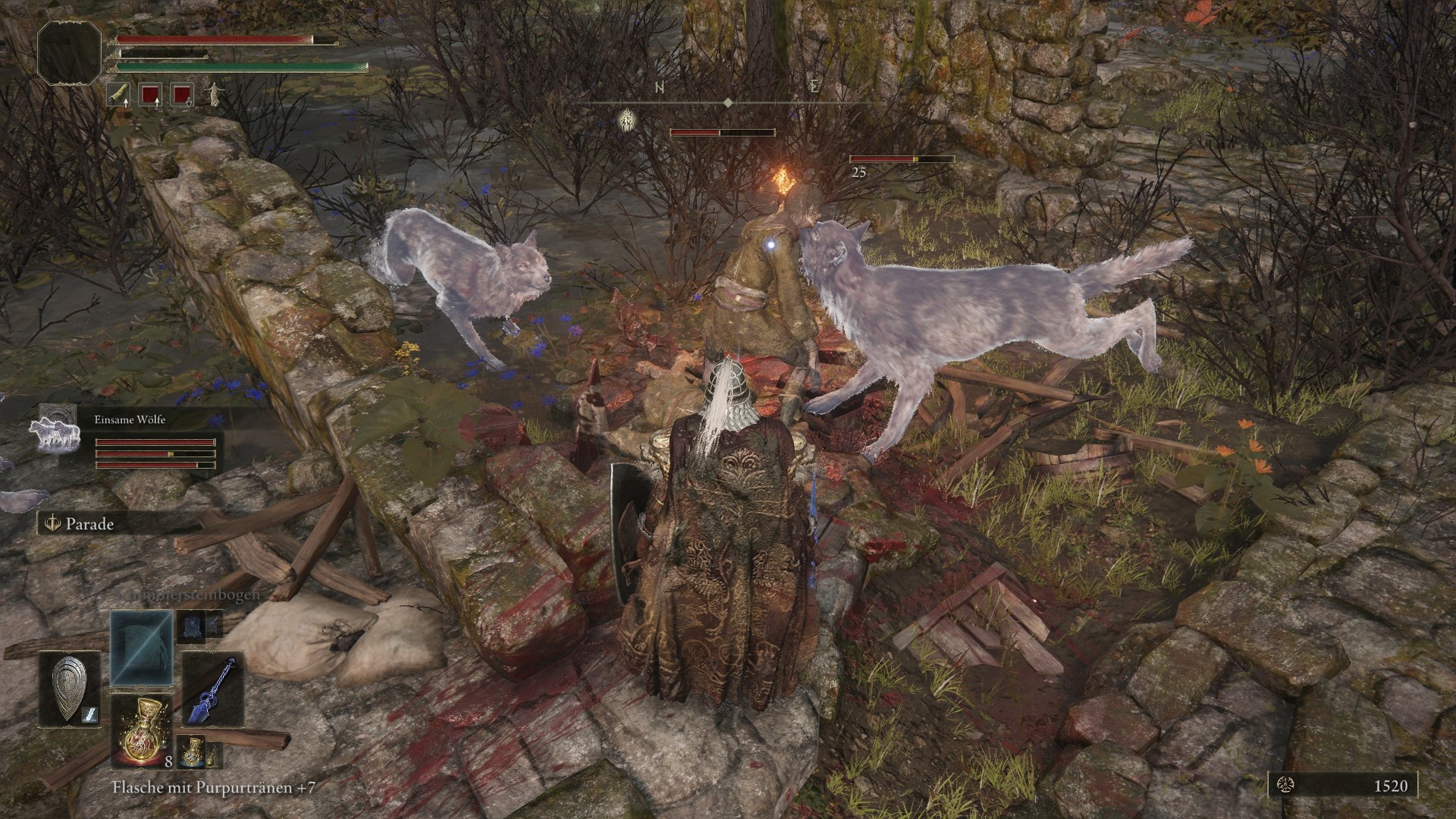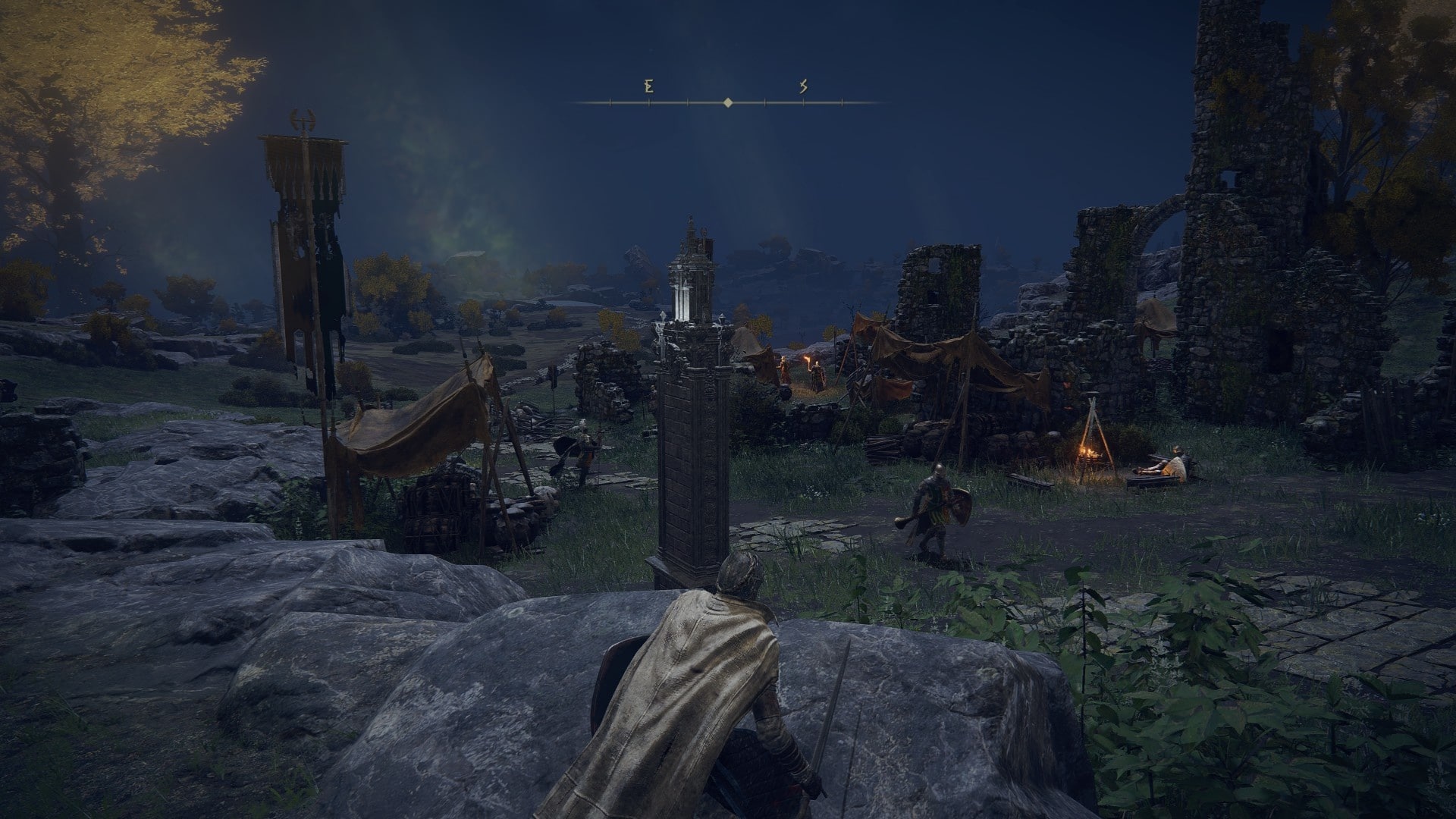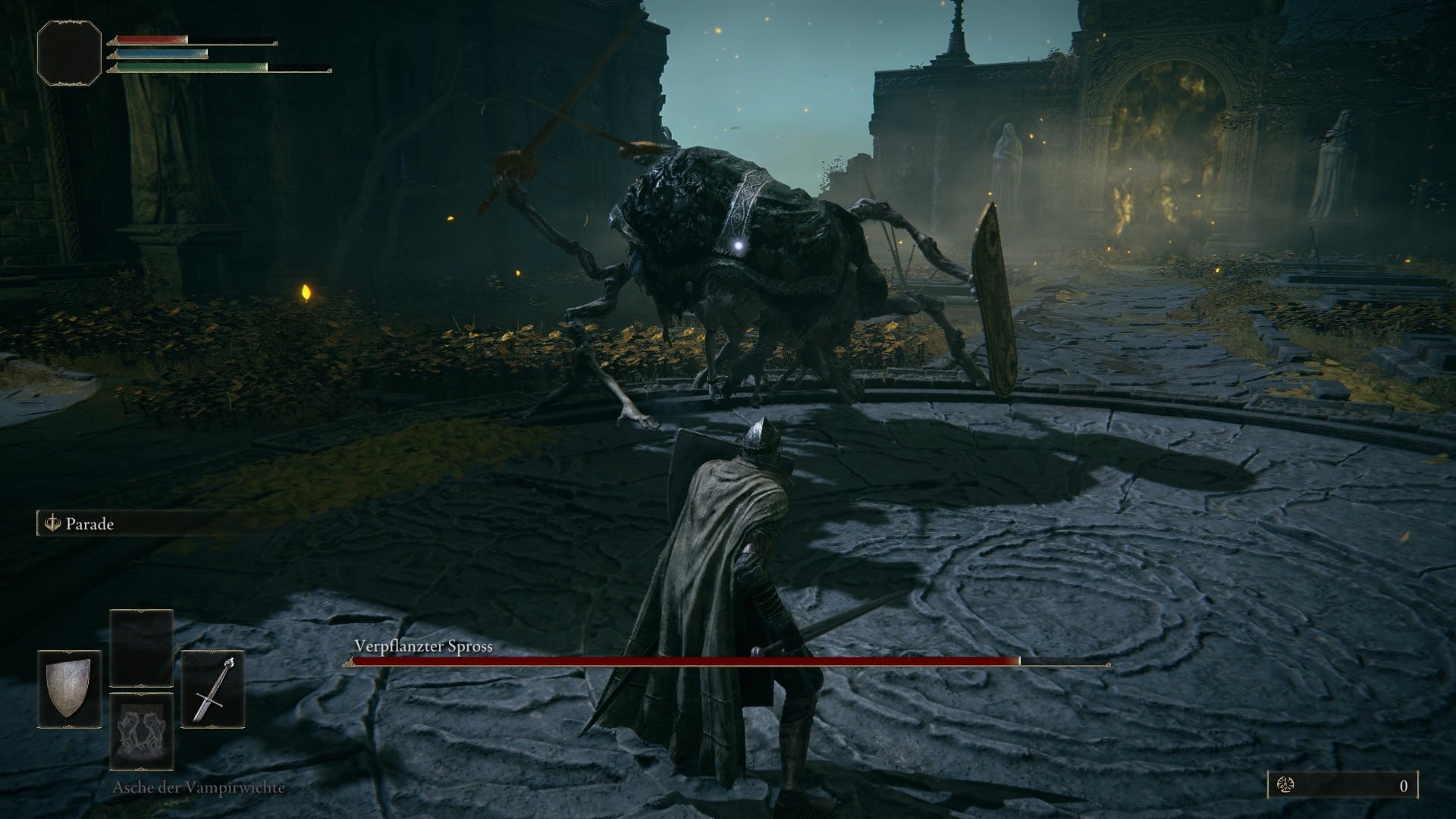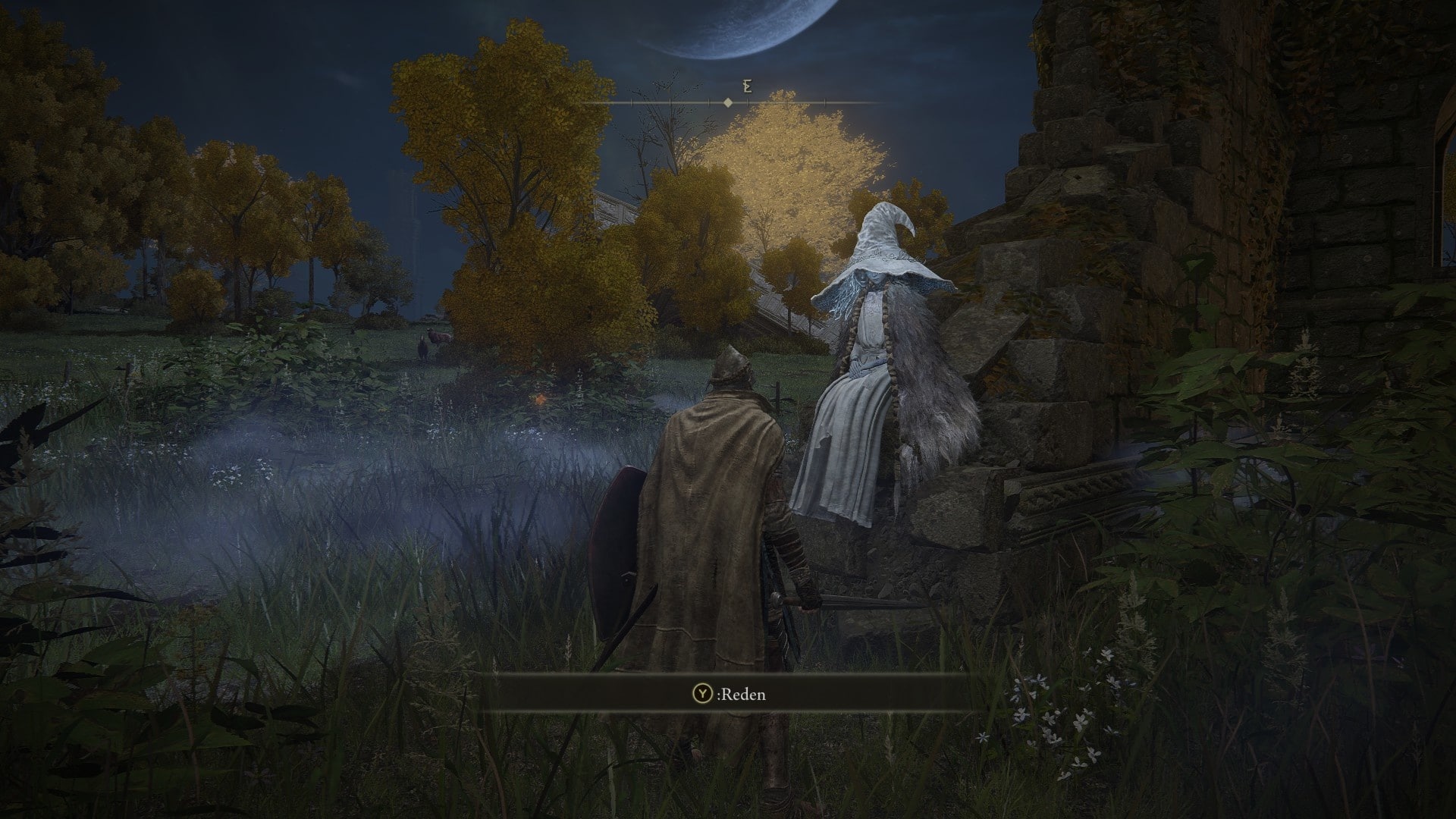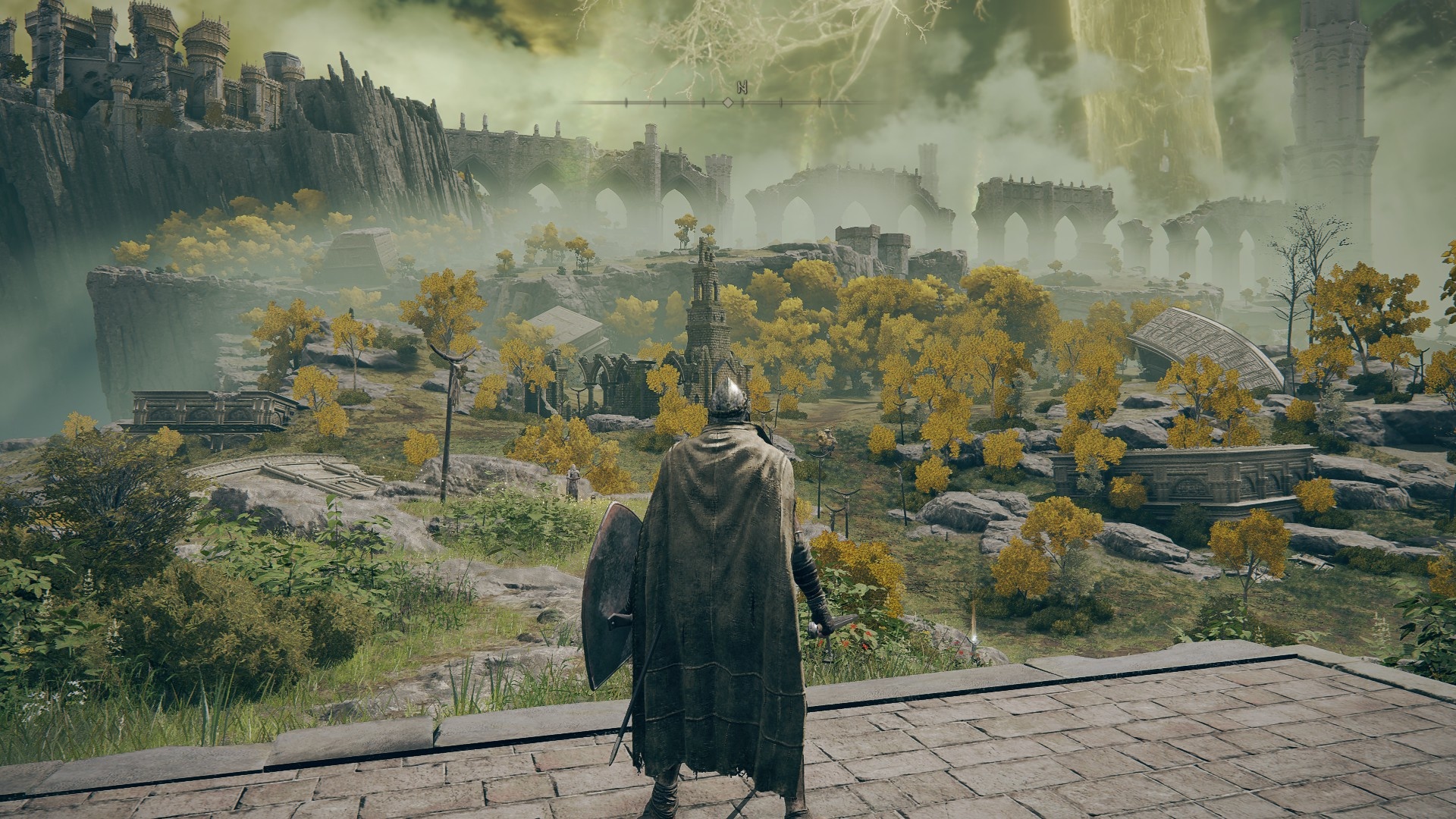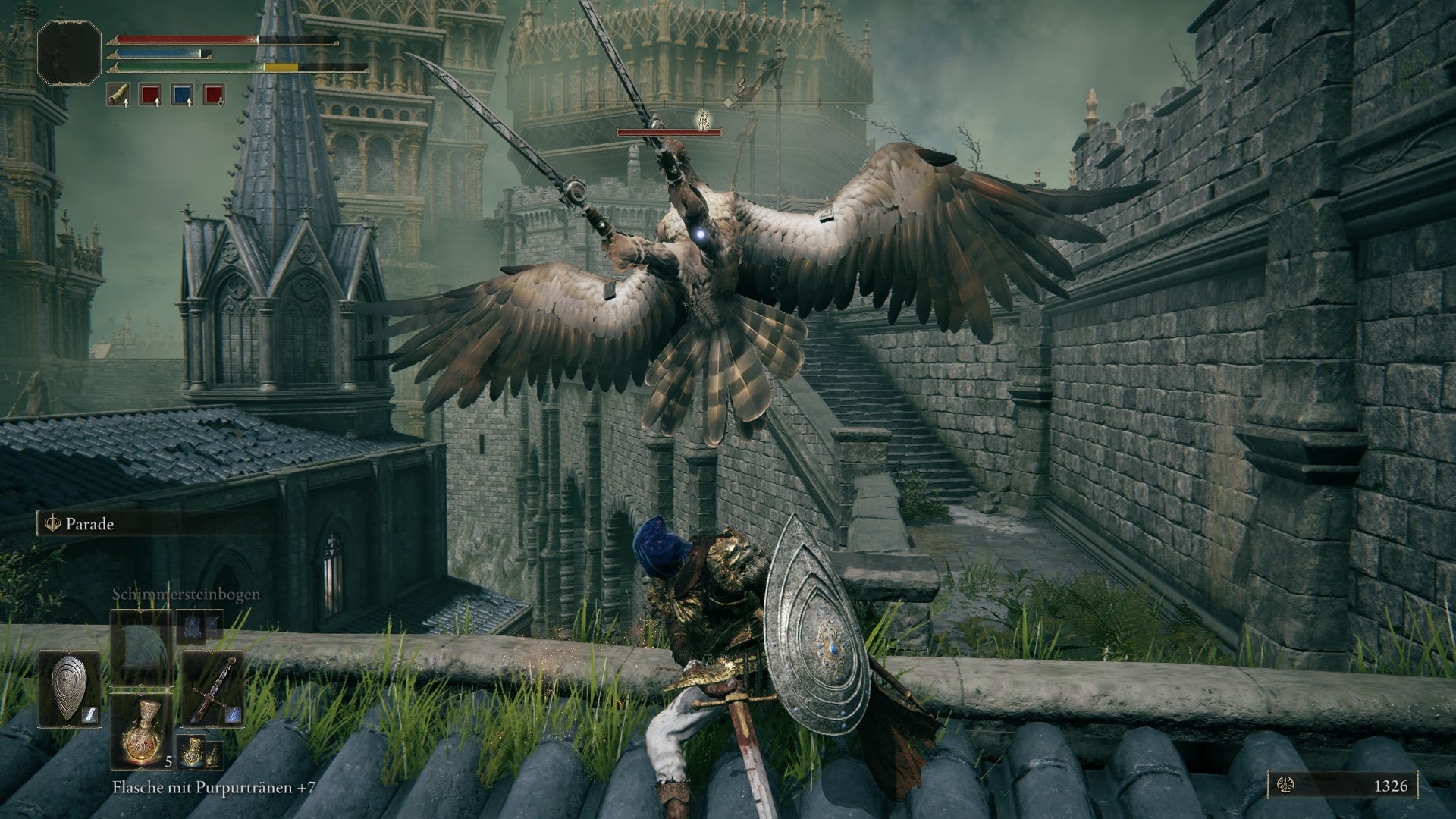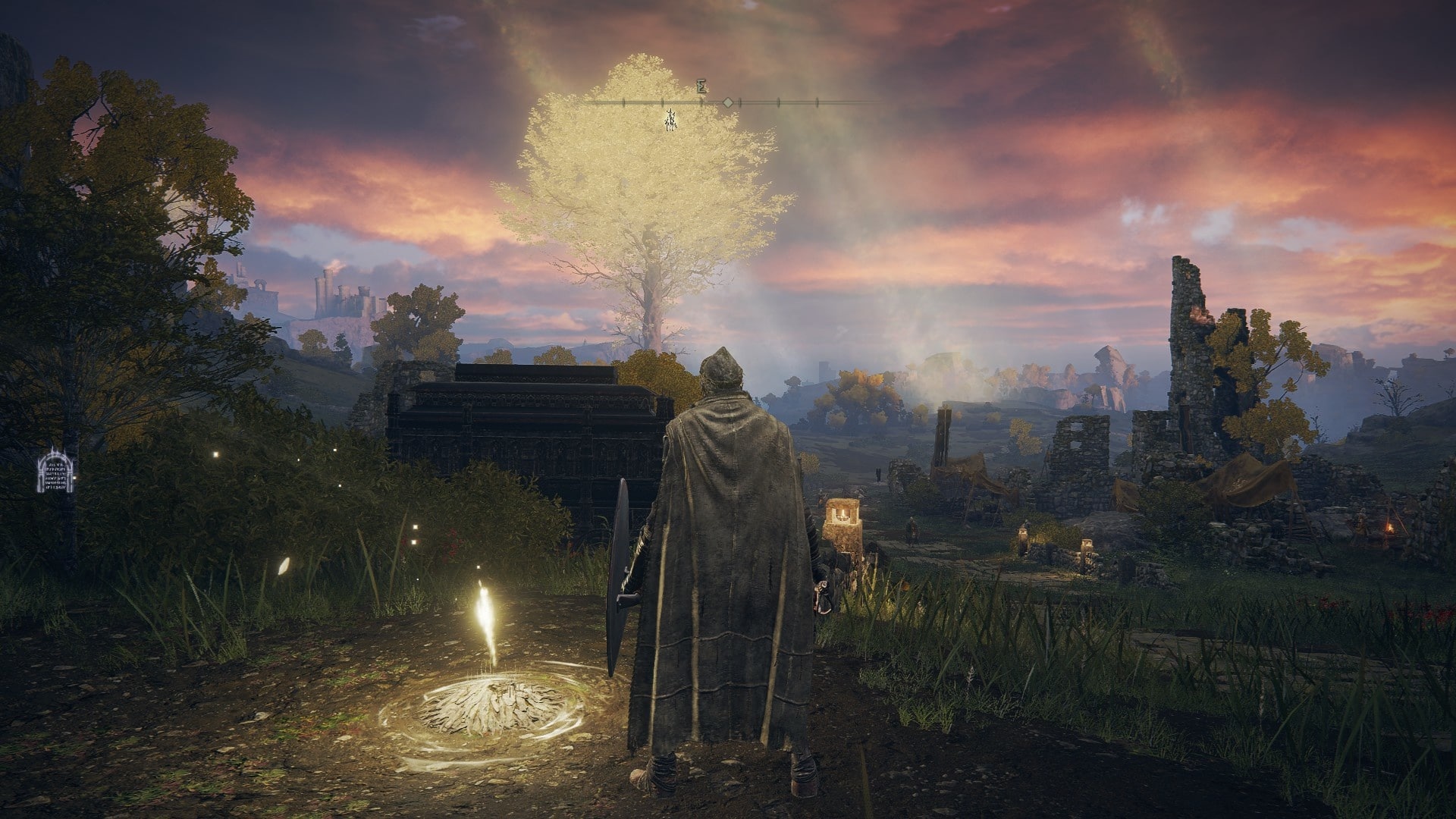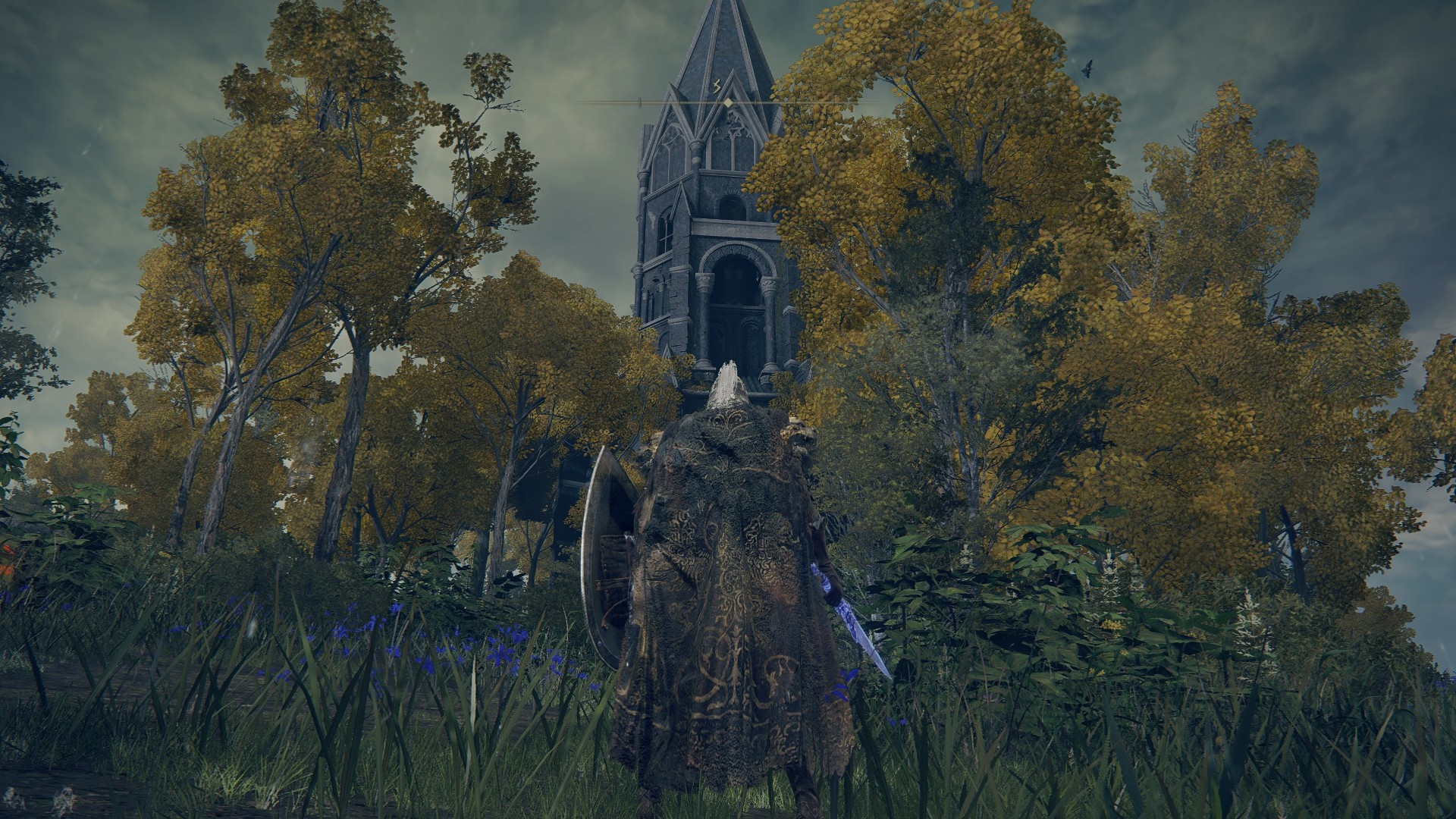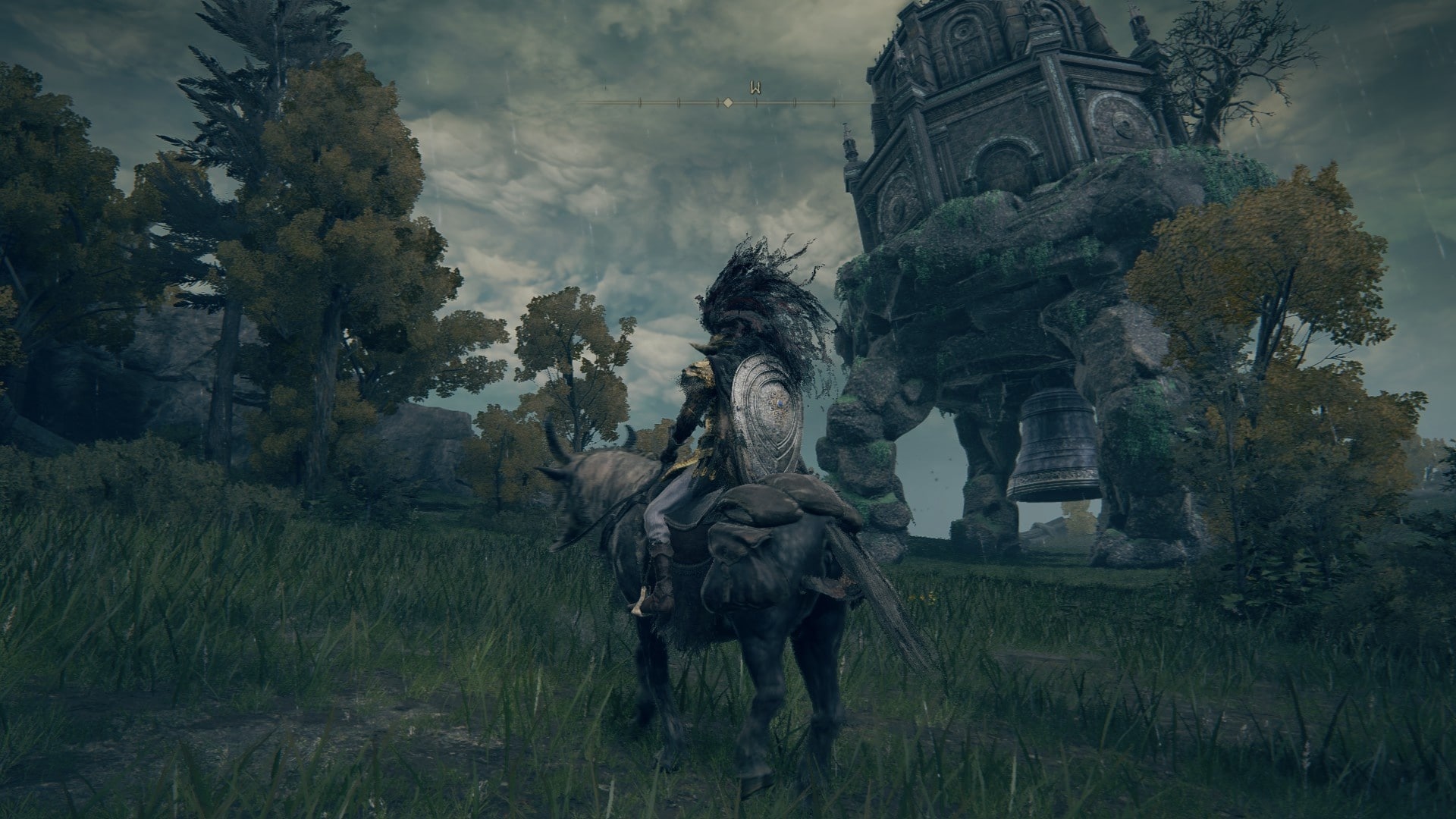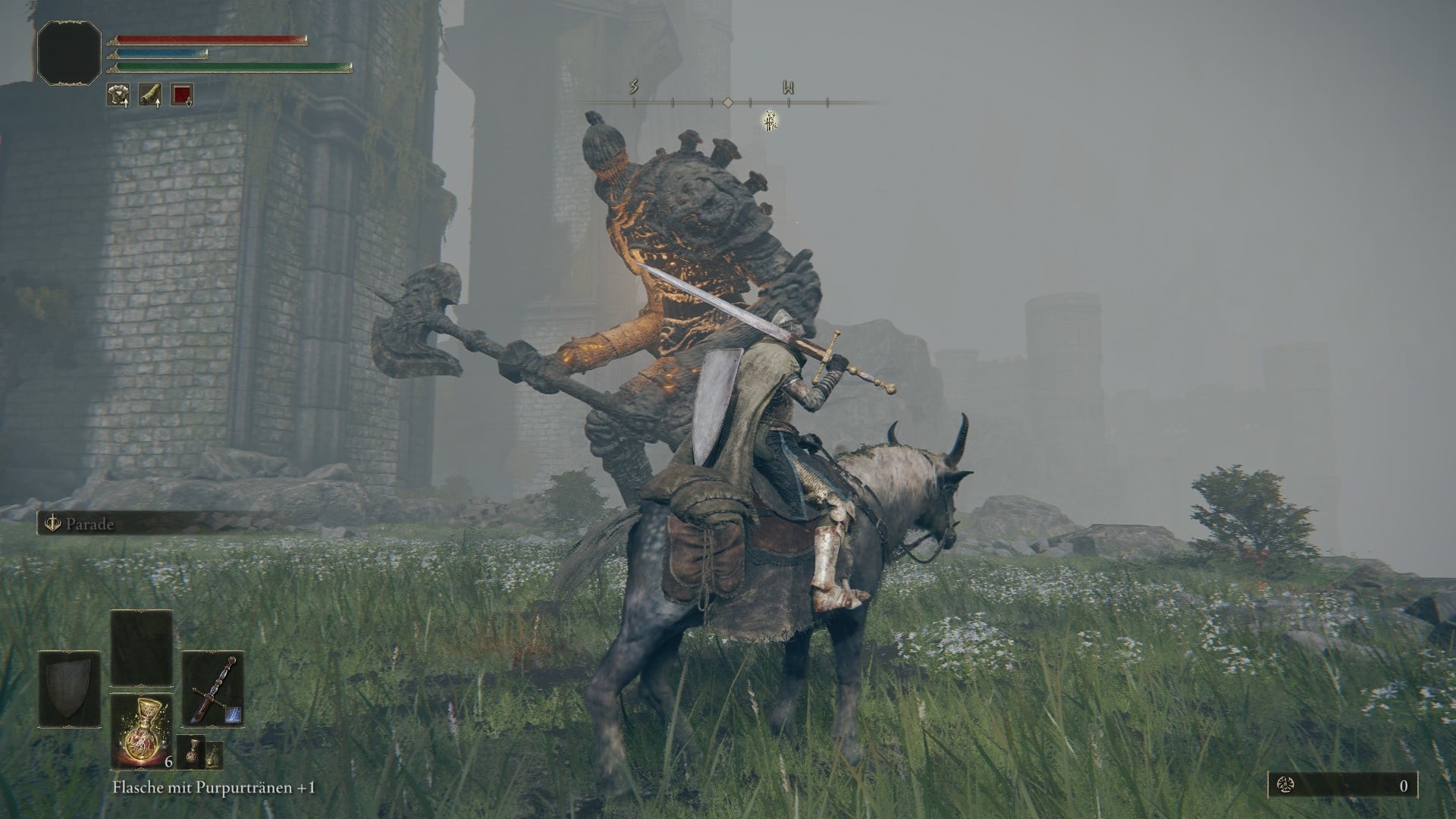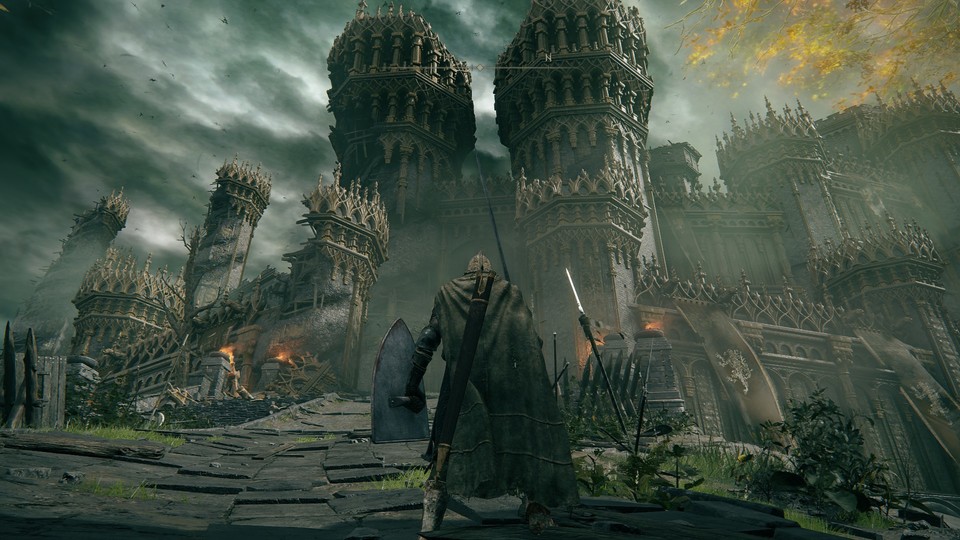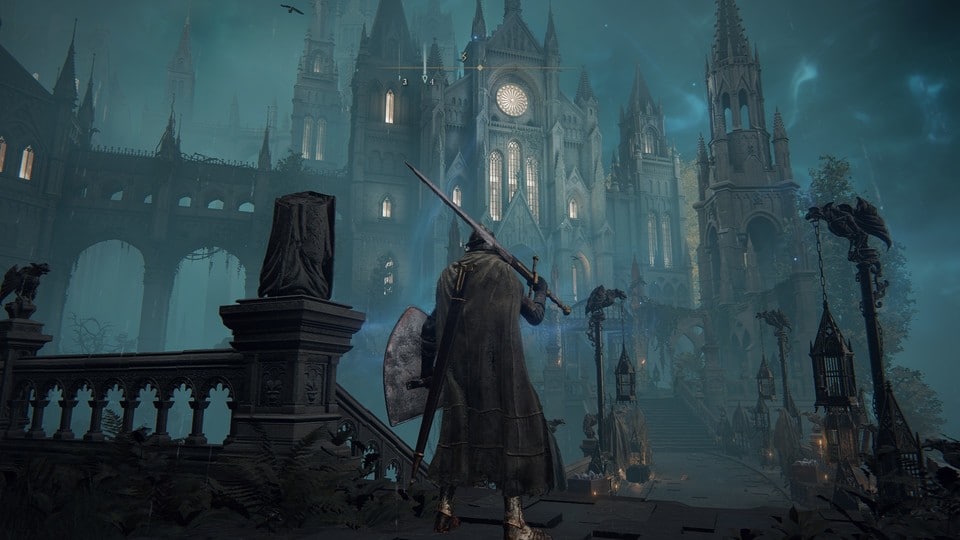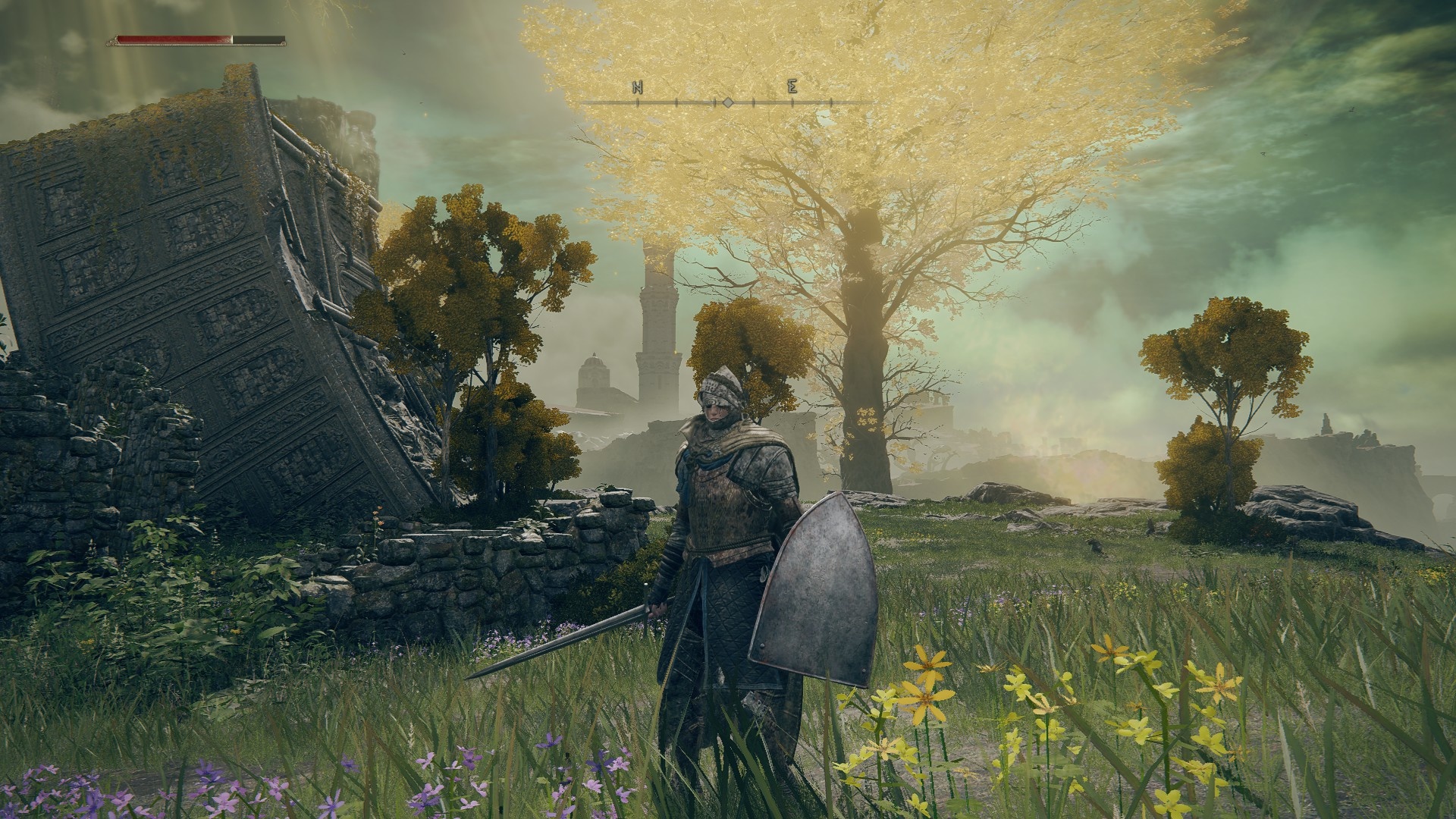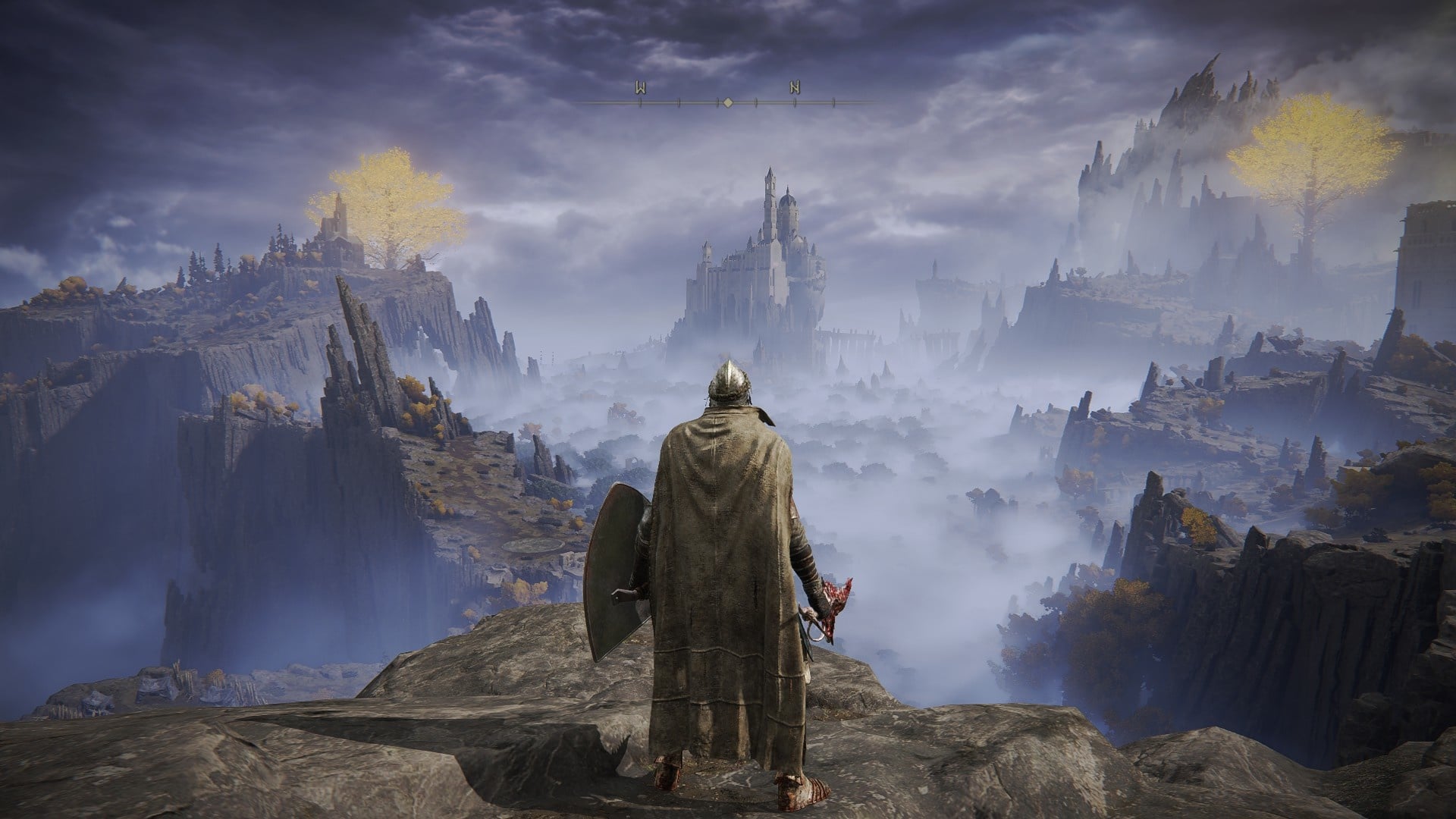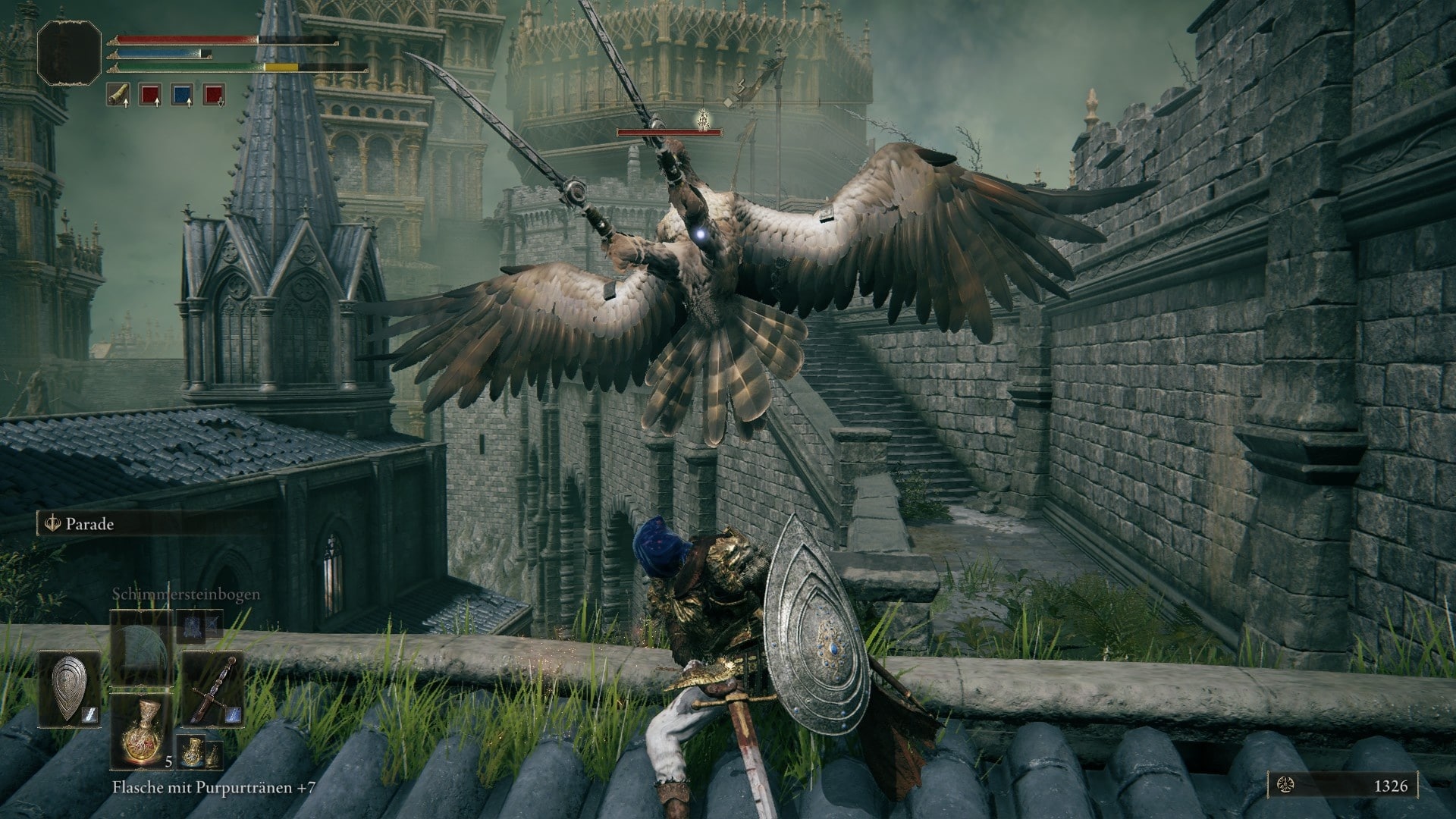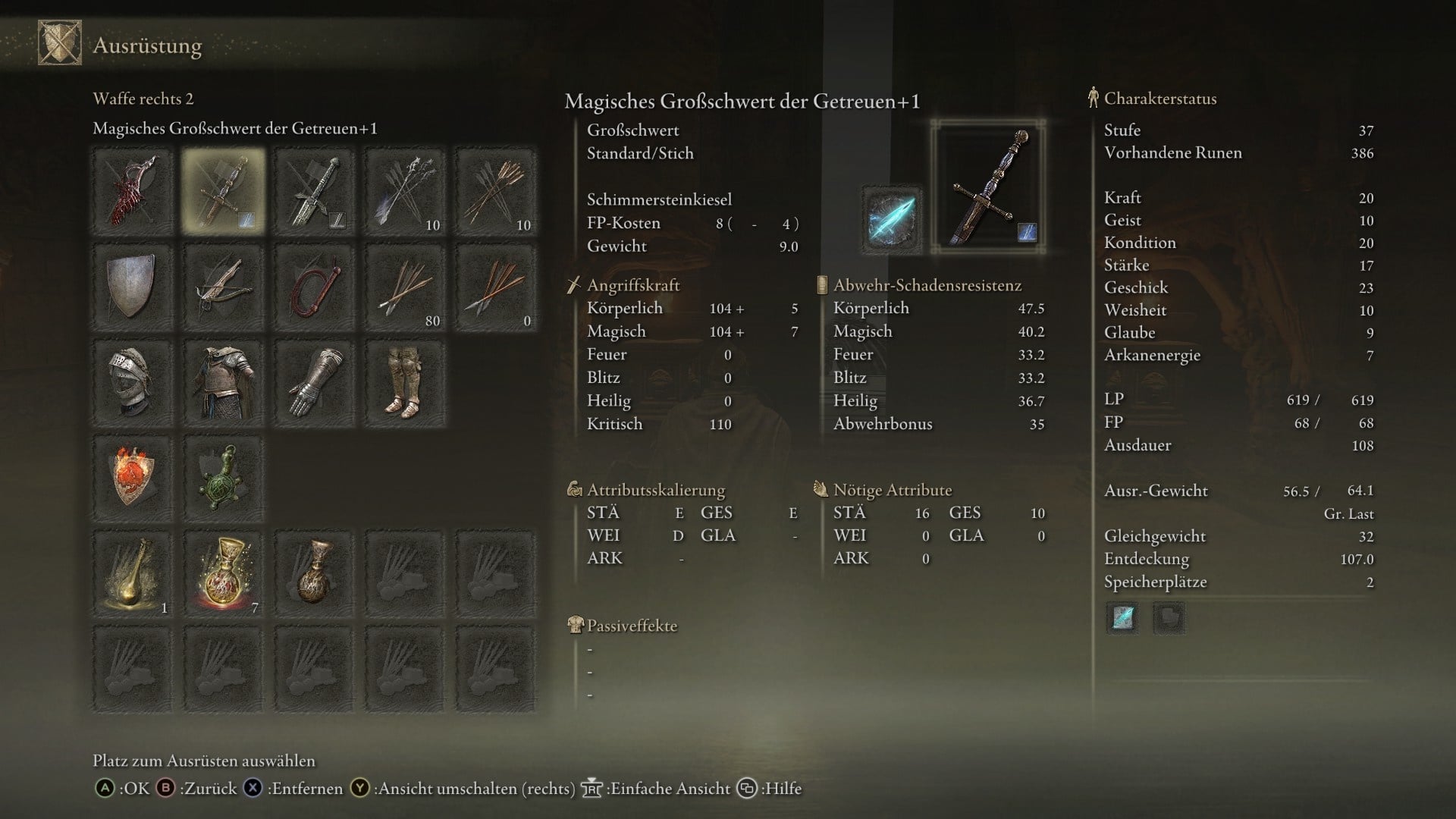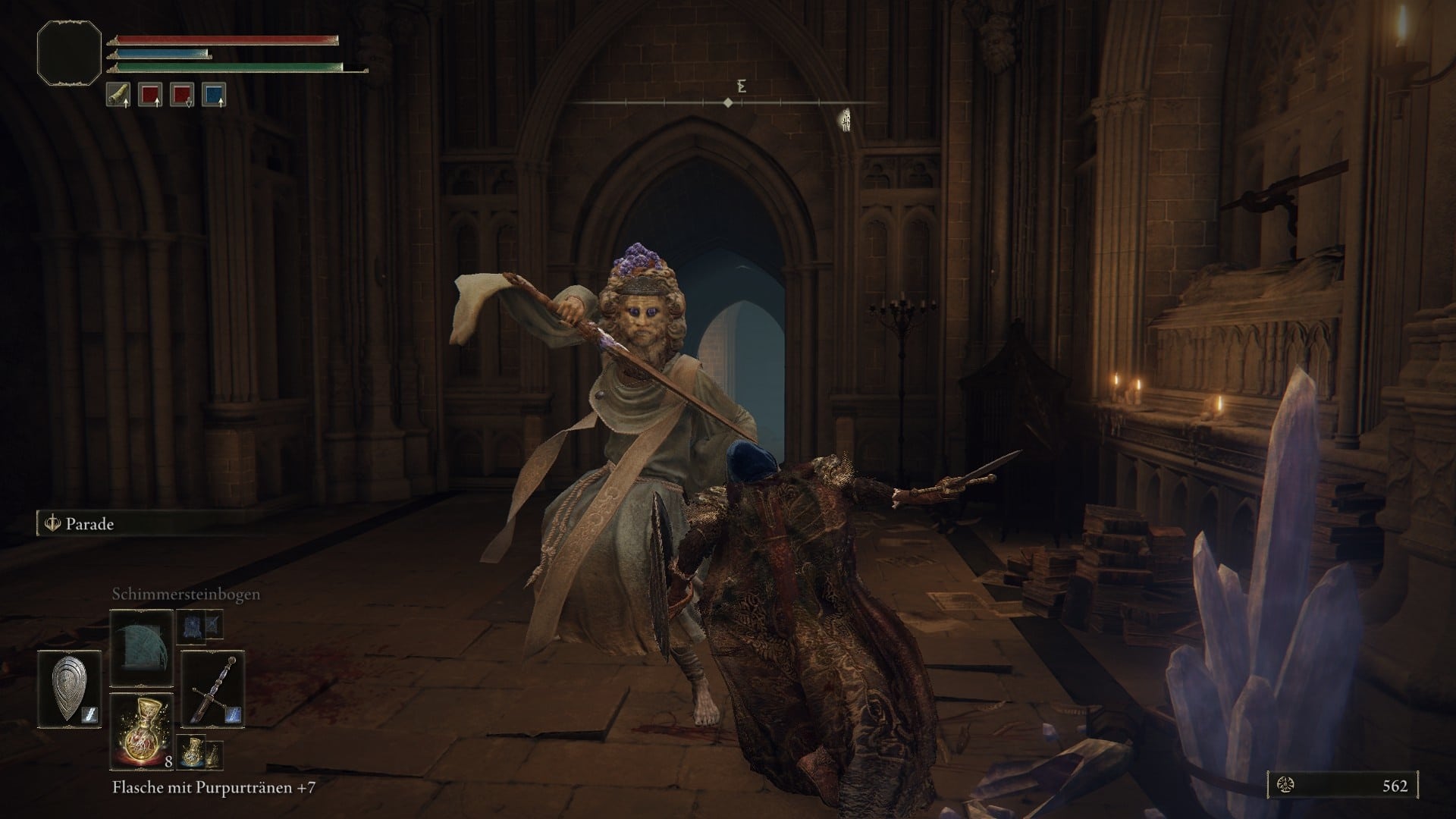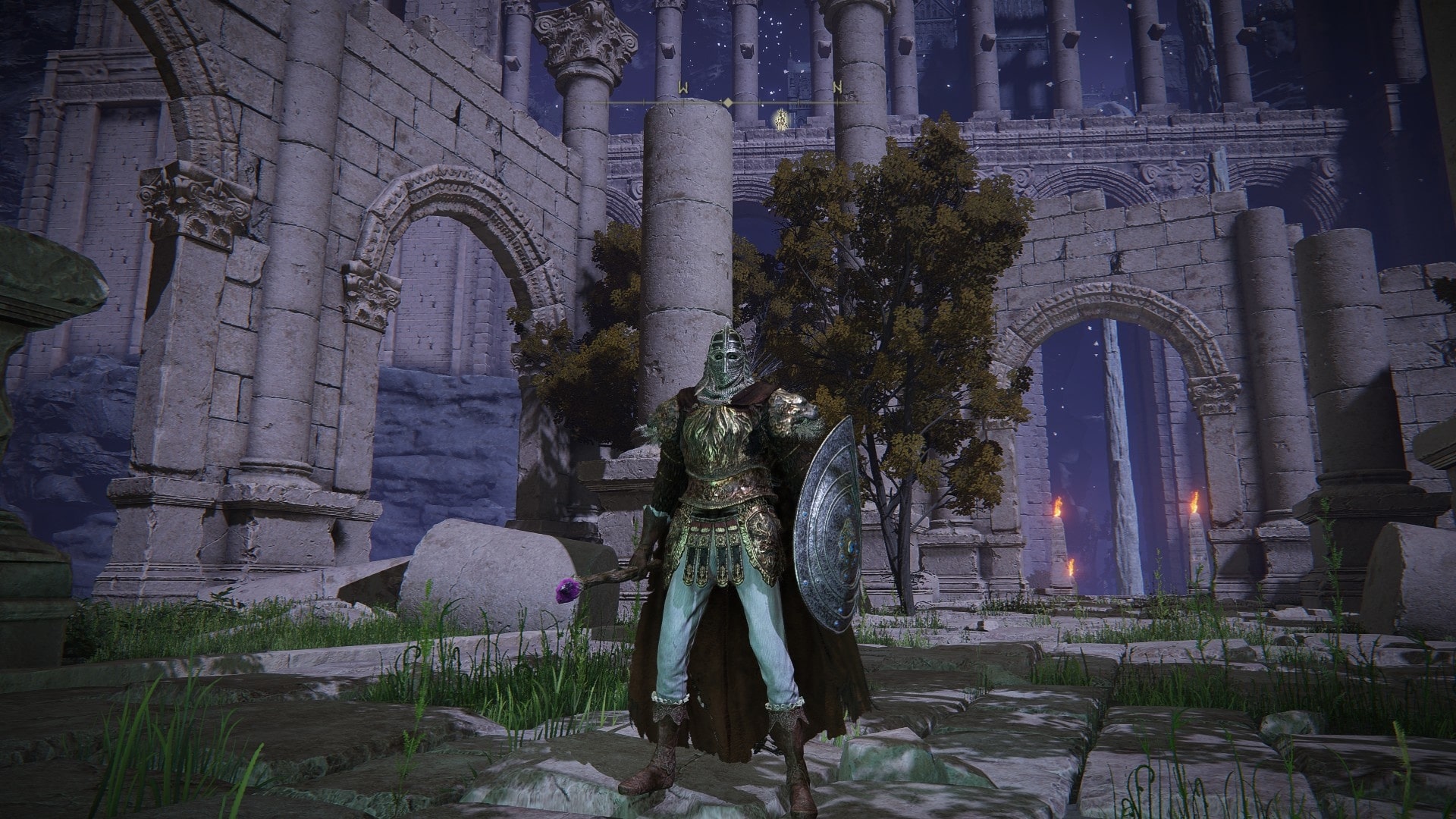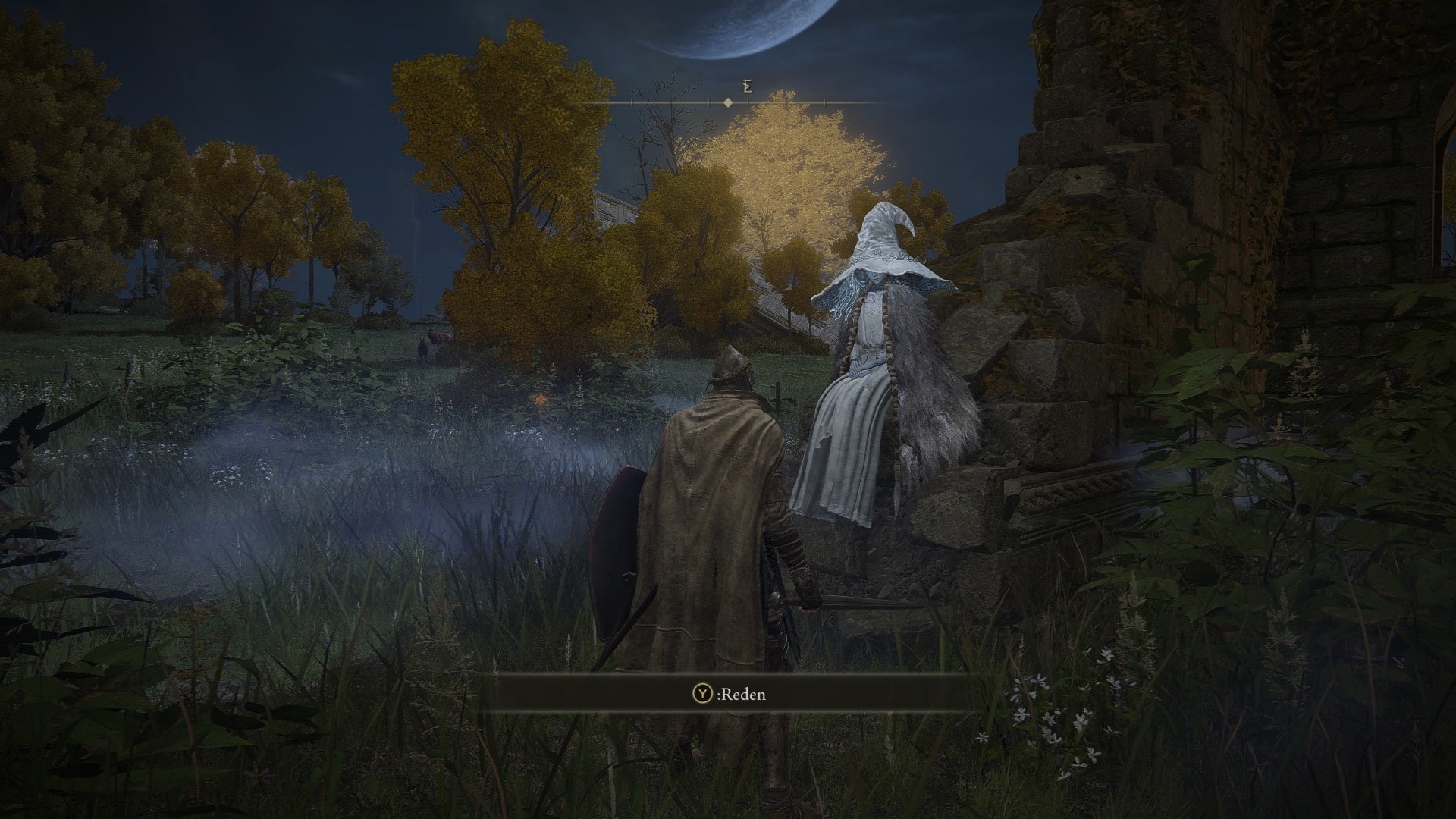In the test, we explain why this decision of all things produces a milestone.
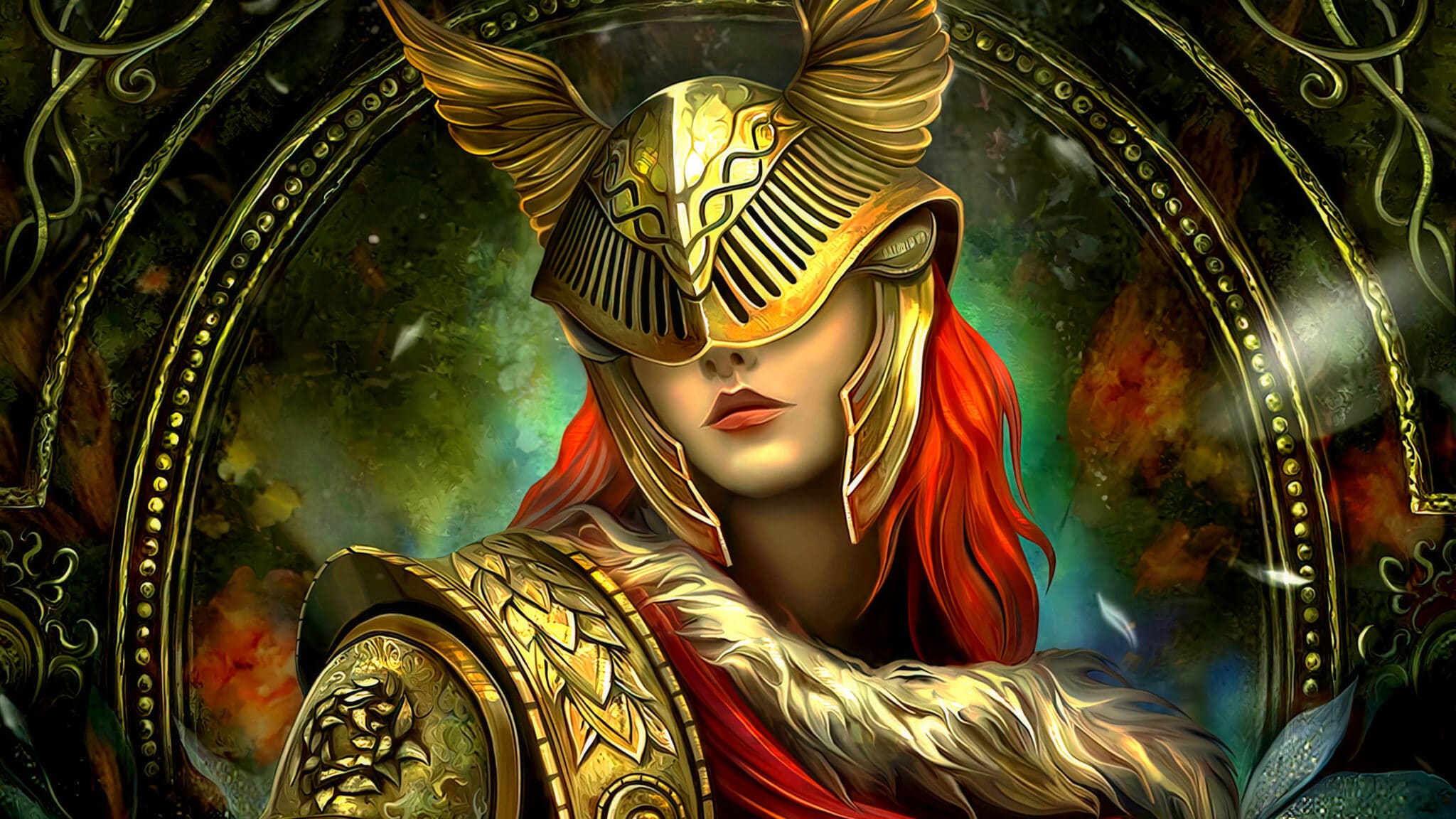
As I push open the stone gates to Limgrave, my mind is made up. Shield waxed shining, blade sharpened, I will slay all the bosses. One by one they will fall. With ice-cold method, I assassinate my way through sluggish skeleton knights and wolves until my pouch is almost bursting with runes, bring giant trolls to their knees and, on the back of my horse, bravely charge towards a dragon that is no longer even suitable as a fireplace lighter.
Its souls – pardon, runes – as the Dark Souls currency in Elden Ring is called – keep my level cash box ringing, if I don’t sacrifice them through careless deaths. With each level-up, I become stronger, endure more and get closer to my goal. Until suddenly, like Rafiki from The Lion King, Elden Ring draws his staff over my head and tells me that there is more than I can see. Okay, maybe it was a priest in a robe made of human skin, with a rat’s tail and a huge rapier, who wouldn’t let me pass under any circumstances.
But he’s right! I only achieve true victory in Elden Ring when I pause my boss hunt, forget my ambitions and just let myself drift. Then the action role-playing game unleashes an open-world magic that I last experienced in a Zelda: Breath of the Wild. By sacrificing many of the strengths of the Souls games, From Software is taking a huge risk. This risk not only pays off in Elden Ring, but it sets a new genre milestone that will last for years to come.
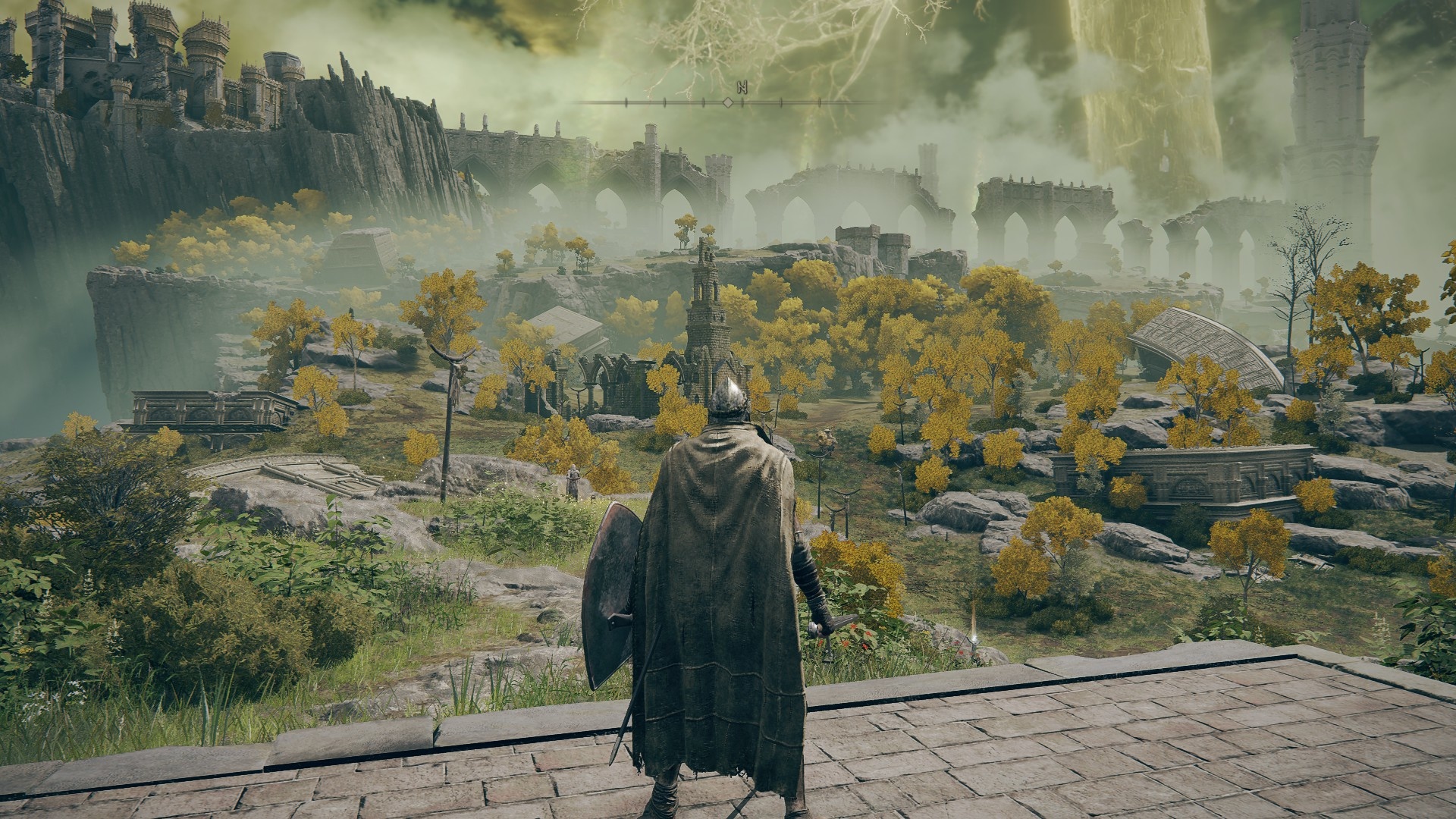
What did we test?
With three testers, we spent well over 100 hours with the pre-release version of Elden Ring, defeated a large part of the bosses and explored the entire open world extensively. In the process, there were isolated technical problems on all test computers, such as jerks, freezes, rare crashes or jumping elements in the game world. Due to the state of our test version, however, we have to deduct two points until the problems are fixed. From Software did deliver a patch shortly before the embargo, but it did not bring the necessary improvement on all of our test systems.
We are of course staying on the ball and also thoroughly checking the launch version for its technical condition. If you are unsure about your hardware configuration and expect a bug-free game, we recommend that you wait for our release technical check.
Why only screenshots from the first third of the game?
Tests on the embargo were only allowed by Bandai Namco if we only show pictures and video scenes from the first two areas. The reason is to avoid spoilers. However, since we were able to experience the entire game and there were no other restrictions on our reporting, we agreed to this embargo. For the release on 25 February, we will expand this test with further spoiler-free screenshots from later areas – for all those who want a deeper visual insight.
Table of Contents
(K)a farewell to old virtues
Dark Souls, Bloodborne or even Sekiro rely on two great pillars: Challenges that I have to bite my way through and an ingeniously interlocked level design that leads me by the nose and yet reveals the saving shortcut or a new beacon at the end. Elden Ring has to do without this, because in an open world I can easily flee from any enemy that is too strong and am nowhere near as manipulable for its creators. Where before they had me dancing as their puppet with precise level and monster design, now they cut the strings and leave me free.
Initially, I saw the open world as a big mistake because of this. As a risk where From Software could miscalculate big time. But with each of the six large areas, it dawns on me more that the developers have tricked me again. Because they don’t need level hazards to mislead me and play with my expectations. On the contrary, their design really blossoms without it, because in Elden Ring the last hint of predictability that remains in Dark Souls and co. fizzles out.
For this to work, though, you have to go for it. Those who play Elden Ring as straightforwardly as a Dark Souls miss out on the magic of the open world. On the other hand, if you play in the Ubisoft style and check off task after task, you won’t understand what sets the open world apart from the competition. What makes it so ingenious is not the what, but rather the how.
The Open World is a vote of confidence
Elden Ring trusts me as a player. I feel like a child who’s been given a stick to hold before being sent off to romp in the garden. Of course the house becomes a castle, the mud under the swing a swamp and the branch a mighty sword – without anyone having to tell me. This childlike mixture of curiosity, imagination and wonder guides me through the open world. Even after 60 hours with Elden Ring, I still discover new things that I didn’t expect.
For example, a huge tower rises up in front of me, only to disappear the next moment. Have I only imagined it? I search the area, find a magic book with a map in it, follow the clues to hidden seals. And suddenly the enchanted wall, including the staircase, spirals back into reality. I follow it up step by step, enjoy the view over the misty forest for a moment and then open a rotten wooden chest with a groan. Inside, appropriately enough, waits an invisibility spell that I will forever associate with this unique place that I discovered all by myself.
On a battlefield peppered with corpses, dirt and broken swords, after many hours I catch sight of a soldier crouching over a dead comrade. Perhaps for the first time I really look, and my conscience comes forward with all the human enemies I had previously knocked out in passing for a few paltry runes without batting an eyelid. Without the game forcing this emotion on me, it just happens.
I nearly fall off my horse in shock when I recognise the disturbingly organic rock formations around me as (hopefully) dead dragons and gasp in amazement.
The open world of Elden Ring is a never-ending source of stories and intimate, personal and memorable moments that burn themselves into your memory. I don’t need a map peppered with marker pins to find them, or quest-giving alien guides to nudge me in the right direction – something I wish Open Worlds did much more often.
Yes, I keep encountering side characters who make requests of me. But where exactly I have to go and what is expected of me, I am supposed to figure out on my own along the way. As a result, no activity in the game world feels like occupational therapy or work. Everything is atmospherically integrated into the environment and motivates me on my own to get to the bottom of things. Similar to Skyrim, the world is full of distinctive places – castles, towers, huge trees or bridges that I can orientate myself by and that lure me with their secrets even from a distance.
A world that plays with me
Even repetitive game elements are cleverly concealed by From Software. Bandit camps and mini-dungeons in catacombs or mines are often constructed very similarly. No matter whether skeletons or magical statue gnomes attack me – in principle I always know where I have to go and what I have to do. Flip the switch, find the lift, open the door, defeat the boss, collect the reward!
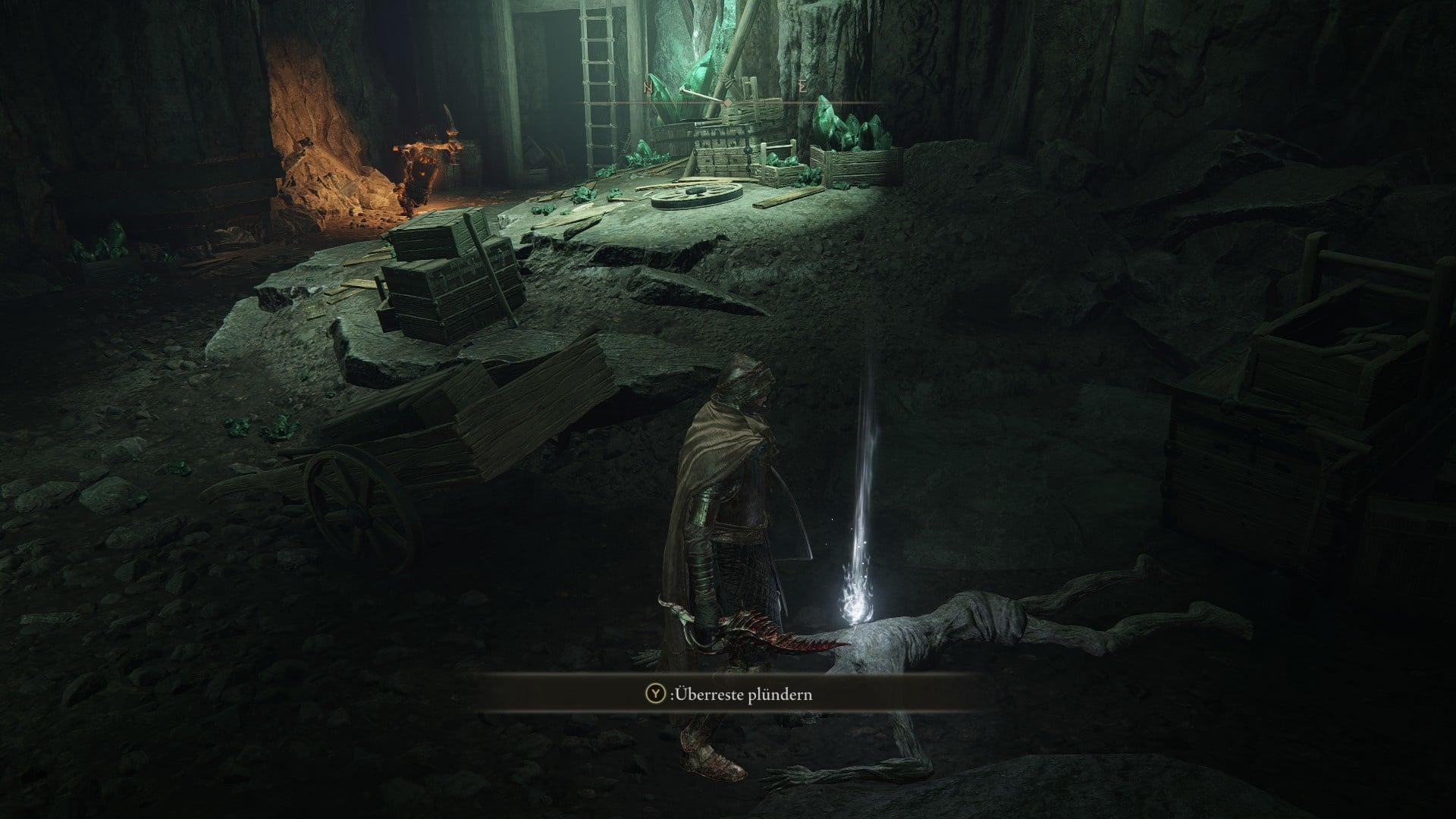
But only in principle! Because all of a sudden I’m faced with the problem that I have to somehow get to the necromancers who are scurrying through the corridors above me. And in an enemy camp, a slug-like boss enemy falls on my head out of nowhere, reminding me with its slimy disgustingness that I should look left, right and definitely up more often. Or downstairs – even here, an enemy once surprised me, and Michi and I have had nightmares about it ever since. So in Elden Ring, too, stick to the good old traffic light etiquette and From Software rule: look first, then run.
The developers play as brilliantly as they do perfidiously with the knowledge I bring with me from other Open Worlds. Towers, dungeons or camps are recurring elements that should be transparent, but are not. And then, above each area, a legacy dungeon towers unmistakably as a mighty fortress or filigree fairytale castle. A sphere all of its own and with its winding paths, traps, shortcuts, ladders and ledges, a homage to the classic Dark Souls design.
Before I am allowed to lay an intermediate boss and finally the main enemy, I must first fight my way free here and, for example, jump from roof to roof over a lava flow, grope my way along bay windows centimetres at a time and drop onto ledges with pinpoint accuracy in order to finally unlock the place of mercy as a checkpoint.
While in the open world these mainly enable convenient quick travel from anywhere to there and indicate interesting locations with their golden glow similar to the gusts of wind in Ghost of Tsushima, here they are my lifeline in times of need. Where in the open world my desire to explore prevails, in the dungeons I am driven forward by a pleasant tension that makes me alert and thorough – both intense experiences that complement each other harmoniously.
This is what you can expect from the technology and graphics on the PC
Elden Ring lets you choose between different presets for the graphics or adjust details such as depth of field and shadow quality yourself. No matter which slider you turn, the open-world game will not be a next-gen experience like Demon’s Souls on the PS5, even if you set everything to maximum. As with the predecessors, however, the developers conceal small blemishes such as bare spots or details missing here and there in style with impressive lighting moods, masterful designs and an atmosphere that is dense enough to cut through.
This works so well that you regularly pause while playing, soaking up the surroundings and already setting the angle for the next desktop wallpaper in your head. In addition, a lot has been done graphically: the textures are sharp and important locations or (enemy) models are detailed. Thanks to the new editor, you can also create a really attractive game character.
The atmospheric staging of the world cleverly disguises the somewhat old-fashioned graphics.
Less easy to ignore are the technical problems that all the testers experienced when playing the game. Objects pop up in front of you with delays from time to time and there are occasional crashes, freezes or stutters, which can cause beads of sweat on your forehead in boss fights. However, the technical hiccups happened so rarely that none of us experienced any serious limitations while playing. Nevertheless, we have to make a slight downgrade. Apart from these dropouts, the test PC with RTX 3070 and Ryzen 7 processor consistently achieved smooth 50 to 60 fps at maximum details.
Our hardware editor Nils will soon go into more detail about technical pitfalls and the optimal settings in his technology check. It will be linked here as soon as it goes online – but in any case before the release of the game, so that you can get a more accurate picture of the technical state in advance.
As far as the controls are concerned, you should definitely use a controller. After all, it’s all about lightning-fast reactions and buttery-smooth movements, where you still get bogged down here and there with a mouse and keyboard, even after a short period of getting used to them, although they basically work. The somewhat awkward standard assignment (space bar for the dodge roll, F for jumping) can be freely adapted. The only annoyance is that the controller buttons were still displayed during the test. As long as this bug is not fixed, you will have to keep thinking for yourself what the equivalent on the keyboard is.
Where you have to make sacrifices
Because everything seems so well thought out and the developers seem to anticipate my every move, it hurts all the more when Elden Ring does become transparent. Although even small fortresses and caves often surprise me with new ideas, what stands out visually, unlike in The Witcher 3 for example, is that they are often created from the same building blocks. The final touches that make the places look organic and believable, not only from a distance but also in the smallest detail, are missing here.
From Software also apparently had to make some open-world compromises with the enemies. Yet the inventiveness, variety and design are basically just as brilliant as in the Souls games. I face siren-like harpies with their deceptively sweet song, bent dark riders on rickety nags or deformed alien babies who announce themselves in the darkness with a bloodcurdling scream and clumsy steps. Don’t just look around, always listen for sounds, you’ll thank me for it!
But it makes a difference whether I spread this variety of enemies over two handfuls of dungeons or over open and large worlds. And so I encounter the scary priest from the beginning in several sizes and also fight a fiery magma dragon with a cleaver three times. In contrast to the tree guards and seafarers, who have their own quest line, these enemies seem to be randomly multiplied and placed where an enemy was still missing. This robs these confrontations of some of their weight and importance.
Because I can also go anywhere the thirst for adventure takes me, I can naturally miss out on a lot. If things go badly, it takes me 30 hours to find the new wand I desperately need. Before that, I get by with my lame standard model including 0815 spells; because even new magic attacks like dragon flames or blue shimmerstone spears don’t fall into your lap. The loot logically matches the areas, and the first area, with its castles and ruins, is home to rather thuggish hoodlum types, who have little to offer to nimble bandits or beautiful-minded wizards.
But if you upgrade your equipment in the forge, it will remain useful for a long time. And the more you explore the open world, the more this initial balancing problem dissipates. And if you have already changed your initial choice of class in frustration, the points can be easily redistributed.
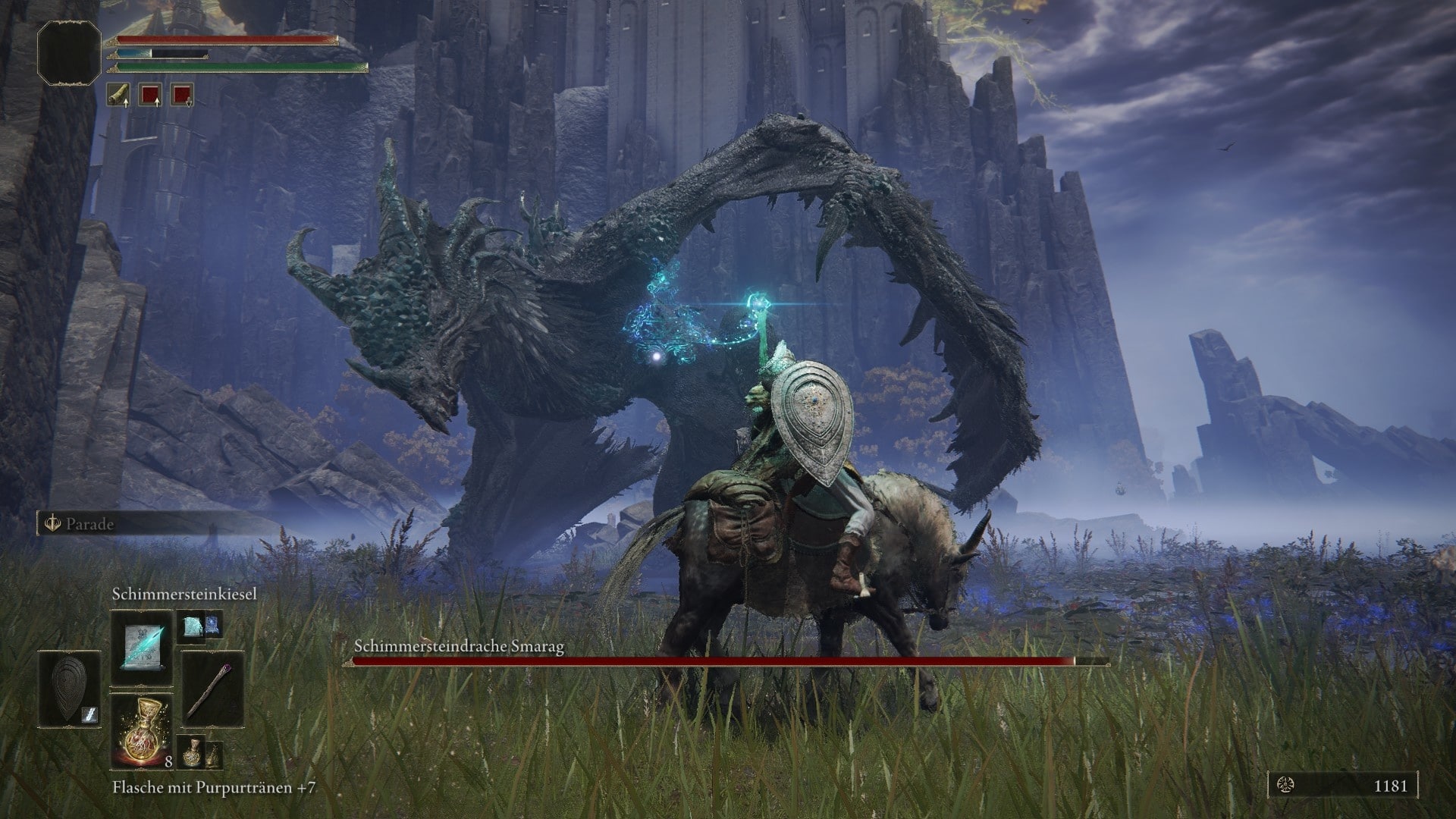
Elden Ring is all about freedom and experimentation. Whether it’s class, equipment or skills – none of it is permanently set in stone. And because the trial and error is so much fun, in the long run I don’t even mind the occasional template enemies and locations, because I can always vary my approach anew.
Fights for the death-defying and the tinkering
Distinctly more Souls tradition than with the game world, Elden Ring breathes in the fights: you block, parry, counterattack, roll away, stab, slash and punch, cast spells or shoot your way through your opponents with light and heavy attacks. Over time, you painstakingly internalise the timing and animation length of each action. Because you are not allowed to cancel anything, every decision and every position counts, a millisecond often determines death or life, victory or defeat.
This merciless force naturally oozes Dark Souls genes from every pore. However, From Software weaves ideas from other games like Bloodborne between the DNA strands. For example, if you kill groups of enemies, you don’t regain health, but you do get a recharge for your healing potions. And while weapons don’t come with multiple modes, they do have special abilities, some of which can be customised and exchanged via the war ashes.
Much like the weapon arts in Dark Souls 3, the gives a sword, for example, lightning damage, a shield a holy defensive counter on which undead crumble or a spear a dizzying whirl attack. You can equip a total of three weapons or shields in your left hand and three in your right, which you can swap via a quick-select menu. You can also use this to call up healing potions, magic elixirs or mounts. Just don’t make your equipment package too heavy if you want to outrun a fleet-footed death knight.
Together with equipment bonuses, skill points in Strength, Wisdom, Dexterity and so on, item buffs or talismans that provide faster stamina regeneration, for example, this results in enormously flexible character builds in which you can exchange and recombine individual elements at any time along the way. You only have to learn additional spells in places of grace, where you also exchange the war ash. The gameplay trailer also shows you battles and abilities in action:
If you cut your teeth on a boss, you won’t be frustrated right away. Now it’s time to fiddle around until you find the right confrontation strategy for your current skill toolbox. Or even the search for the one spell or shield that will finally give you the upper hand.
In battles, you’ll also have an easier time if you explore a lot: The majority of the optional bosses in the world or dungeons drop exquisite weapons and armour. Or even tears, which allow you to brew personalised remedies, with which you can, for example, completely block a single attack and fill your life bar at the same time. Alternatively, you can hunt animals and collect plants and ores, which can be easily processed into firebombs, sleeping arrows, poison glaze for your own blade and more using crafting kits.
You can, of course, ignore all this and simply fight your way through with clenched teeth, loincloth and club. Even such fine adjustments, however, can tip the scales in favour of finally bringing down the seemingly invincible opponent.
Why Elden Ring is more accessible
It’s precisely this variety coupled with the open world that ultimately makes Elden Ring more beginner-friendly than its Souls predecessors, without sacrificing the ambition of the battles. But you always choose your own route and challenge, as well as the timing that’s right for you.
If you’re still too weak for a boss, you can simply come back later, because the world around it offers much more – sometimes even a secret path around the boss, for which you then have to master a jumping puzzle with your ghost horse Stormwind instead. Outside of dungeons and multiplayer sessions, you can summon Stormwind to help you everywhere. Or you can sneak up on enemies to impale them from behind with a particularly strong attack, lure them into chasms or stun them with sleeping arrows instead of seeking direct confrontation.
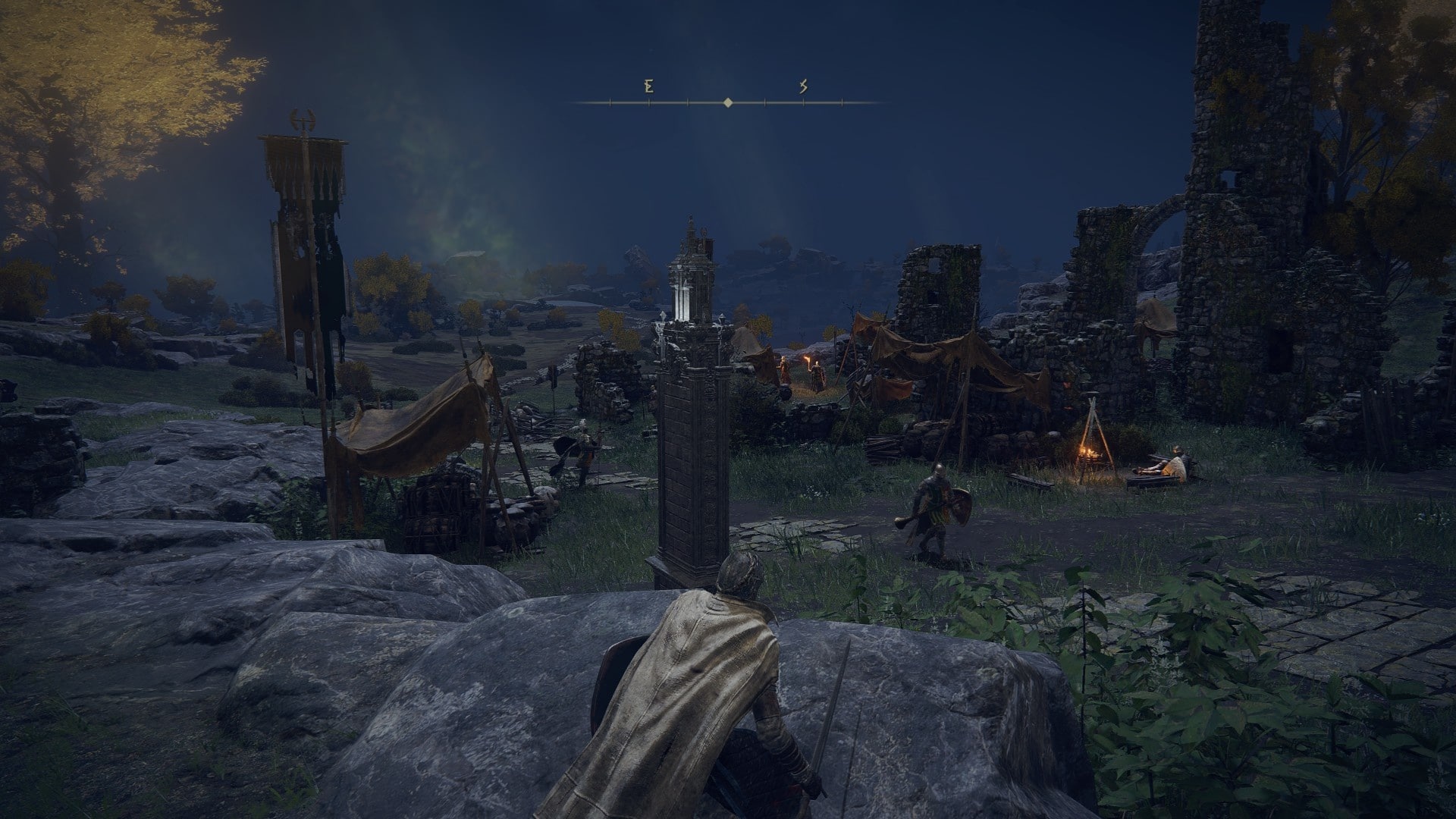
How the multiplayer works
It’s part of the charm of the Souls games. Nevertheless, the multiplayer of Elden Ring is unnecessarily complicated – especially when you consider the comfort of fast travel or the map. That’s why I’ll explain to you in a detailed guide what you have to bear in mind when you want to play with others. Basically, the multiplayer is very similar to Dark Souls:
- You can choose between co-op, PvP and invasions. In the former, up to three players play together via drop-in-drop-out, explore the world or lay bosses together. In PvP duels, two players meet to fight honourably, while an invasion involves secretly invading the other game world. However, the invaded player is allowed to call in co-op reinforcements to help!
- Each variant requires its own item combination, for which you will find the appropriate items early in the game. If you want to play with a certain person, you should set a group password and then leave your mark with the stained person’s crooked finger at an agreed location. The other person can then use the scimitar medicine to make the call symbol visible and call you to them. Alternatively, you can use the small golden statue. Then you will move into a summoning reserve, which can be activated by all players who are stuck at a certain point. However, the small grey statue in the area must be activated and the area boss must still be alive.
- You will also find messages from other players in the Open World and the dungeons again, as well as bloodstains with player deaths as a warning or their ghosts, which may show a treasure or interesting path.
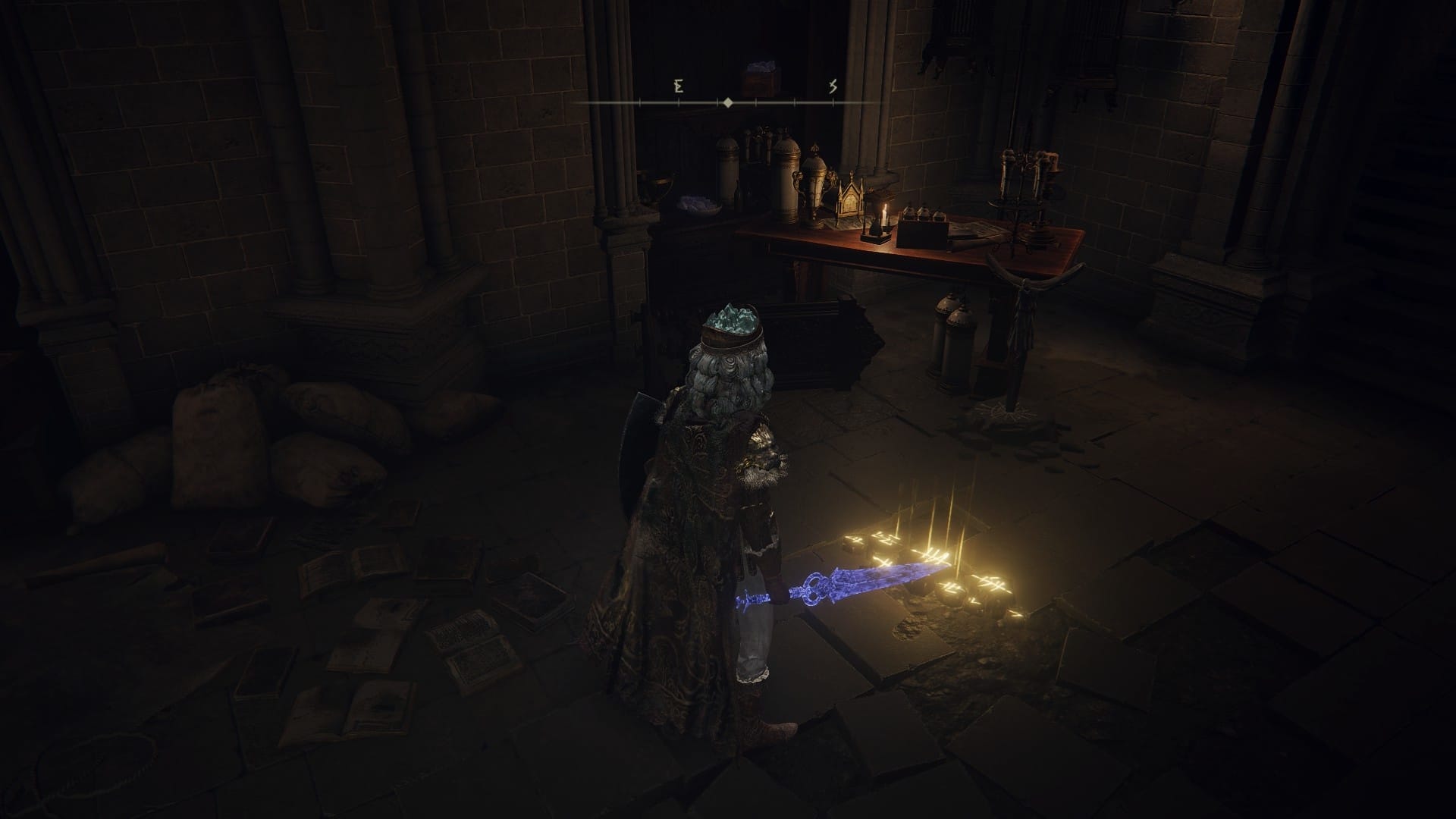
If you leave your mark with your crooked finger, it will look like this. The symbol will then appear in the same way on your co-op partner’s world, from which he can then call you.
If you don’t want to have anything to do with all this, you can deactivate the online mode in the menu. Then neither the remains of other players nor invaders or helpers will appear. After all, all the hustle and bustle can be quite detrimental to the atmosphere. On the other hand, other players make especially tough boss fights much easier. If you are stuck somewhere for a long time, you should consider calling for help.
However, it is important to note that progress is only saved for the host, while visitors are only allowed to take their loot for their own game. In addition, guests must pay a hefty travel tax with half of their healing and magic bottles.
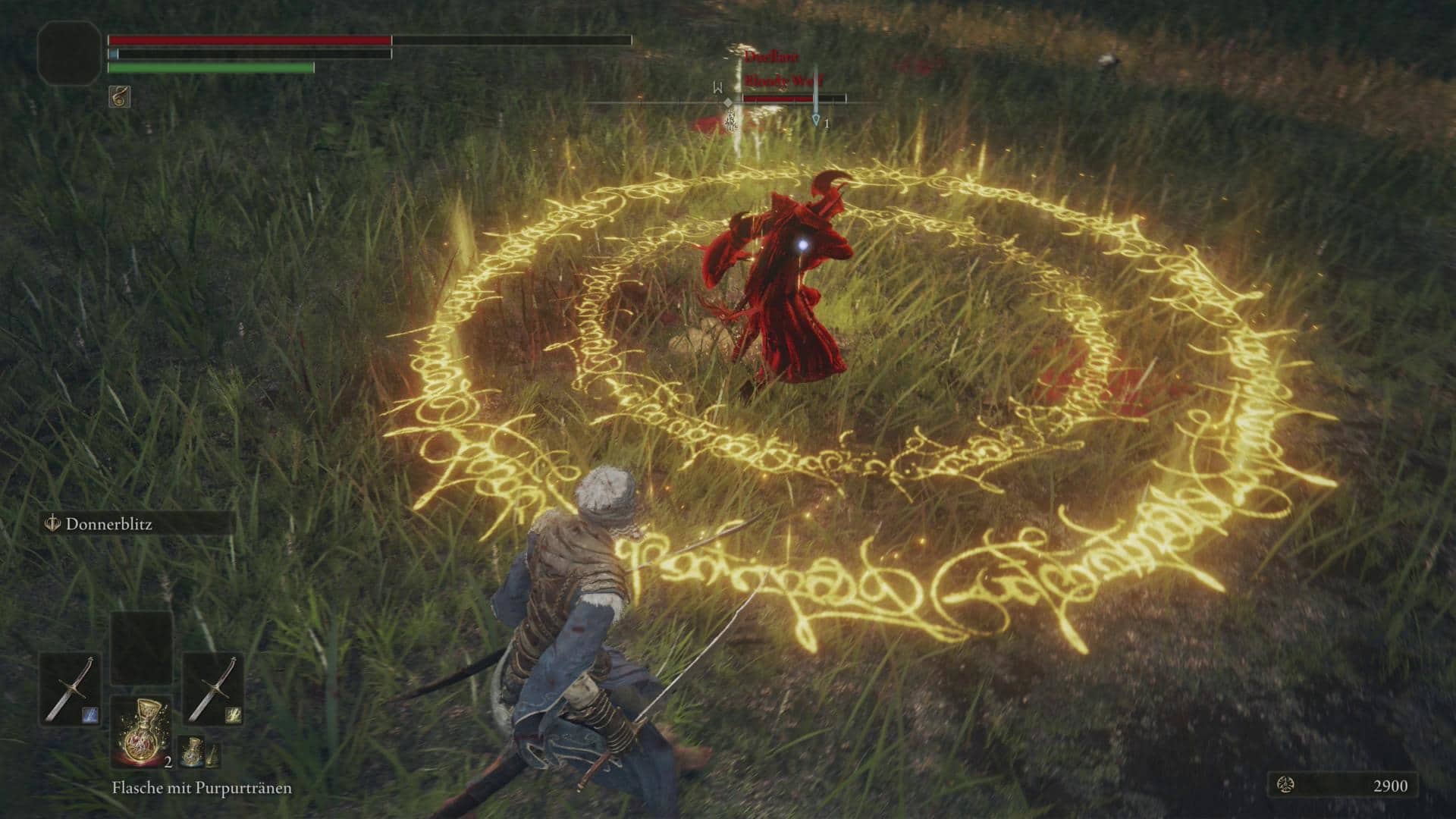
Levelling and training diligently is just as possible, as the enemies sensibly don’t scale with them. However, Elden Ring never becomes too easy, because bosses reach deep into the bag of tricks. I don’t want to anticipate too much here, but if a lightning-fast wolf attacks with ranged spells and a giant sword, it’s of little use to me that I theoretically deal a lot of damage – I don’t even get a turn. If you don’t want to learn attack patterns, you will fail in Elden Ring just like in all other From Software games. Except for the story and intermediate bosses in the dungeons, however, all bosses remain optional.
If you still get stuck and can’t get any further, you’re not on your own. The co-op mode naturally takes a lot of weight off your shoulders, because the number and strength of the enemies do not scale one to one. Lone wolves, however, also know how to help themselves with the ashes of fallen enemies. You can find them in the open world, exchange them for runes at traders or win them as spoils of victory. With the remains, you can summon skeleton soldiers, flying monsters with bows and arrows or even a mage if you prefer to get up close and personal with an axe.
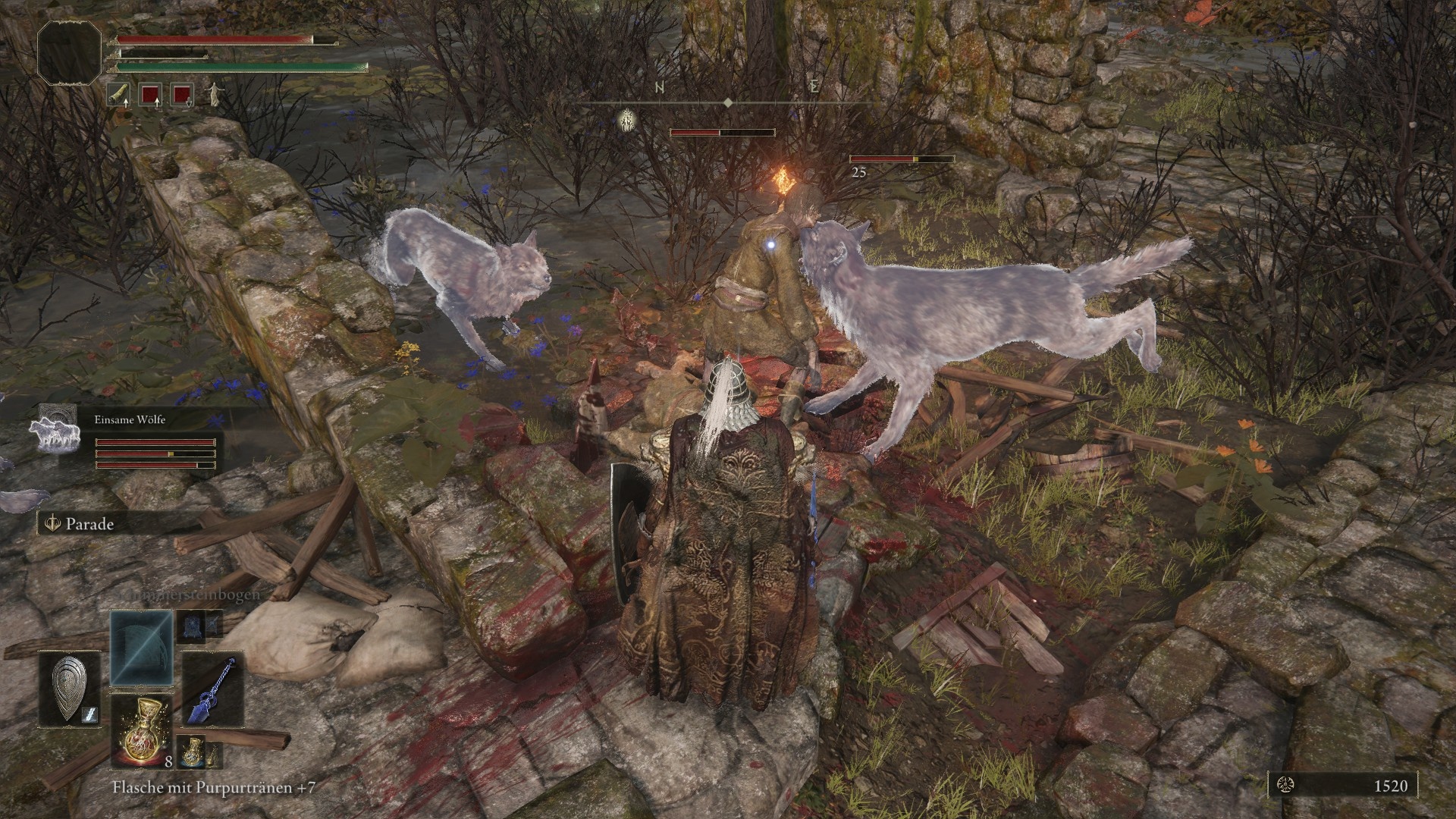
This is how you compensate for weaknesses, expand your battle strategy and distract the boss. Even if the little helpers can’t withstand or dish out much, these seconds can be crucial for sounding out the situation. Summoning is always possible when a small obelisk is nearby – both with bosses and in the open world. Rarely, you may also summon NPCs in parallel, provided you have already met them before. All the more reason to explore thoroughly!
By the way, the miniature monuments are not to be confused with the Stakes of Marika – small statues that serve as additional checkpoints to shorten your run before bosses. Some hardcore Souls players may find this soft, but for me, the developers have found an ideal way to open up a bit more to everyone who is fascinated by the lore and story of the Souls games, but has so far failed in the battles.
A ring to stir them
For them, it’s also worth giving Elden Ring a chance as a complete newcomer. For here the action role-playing game once again treads a middle path ready for compromise. The overarching story arc defines your adventure surprisingly clearly: as a Tainted One, you are an outcast who seizes the opportunity. Because the Elden Ring is broken, the interlands are in chaos, Queen Marika has disappeared and her demigod children are snatching the shards of the sacred artefact to take her place themselves.
It’s a power vacuum that you too could fill if you elevate yourself to Elder Lord. So you set out and challenge one descendant after another on the way to the crown. In the respective area, you will then learn more about your current opponent from NPCs and items, and in the final battle, thanks to occasional cutscenes, you will also see more of him than just his claws or spearhead – sometimes even a spark of humanity.
You’ll also try to recruit more tainted ones as allies, who will then offer their services and goods in the Round Table (an off-map retreat) or simply chat with you. But you’ll also encounter much shadier characters, such as a mysterious snow witch who talks about cheating death with a sweet smile on her lips. Tempting, but really a good idea?
Here, the developers remain deliberately vague and, as in the Souls games, rely on your curiosity. As before, you still have to glean a lot from cryptic dialogue, item descriptions, enemy designs or the environment itself. However, if you do this, you will be richly rewarded when seemingly unimportant details suddenly fit into the big picture and you suddenly understand what has happened and who you are fighting.
If you forego this, you will still experience a stringently told story with a beginning and an end thanks to the red thread of the story. Besides, the unparalleled atmospheric world design of Elden Ring tells so much more than cutscenes and dialogue ever could.
Land and people are worn down by war, everything crumbling and decaying under the canopy of the Earth Tree, its golden glow vaguely reminiscent of better times. Slave drivers whip huge trolls through the streets or hang them from trees on which, elsewhere, bears sharpen their claws, looming for me as menacing shadows out of the mist. A huge crater bears witness to a catastrophe of unimagined proportions, while a secret path leads me down a well and suddenly into a new, subterranean realm where stars glitter on the cave ceiling and temple pillars grow up from their reflections in the clear water.
If all game mechanics were removed, I would still want to explore the open world. Because even in its deepest corners, spherical sounds and melancholic melodies still accompany me, reminding me away from the orchestral boss violence that this dying land is drowning in melancholy and regret.
And yet I can stand next to droll penguins on a cliff and admire a sunrise, or talk to a comrade-in-arms and briefly feel hope and love of life – or laugh at the servant of a noble who angrily stomps on him after his demise, only to politely apologise to me afterwards for his rude behaviour.
This world has a story and a soul that digs deeper and is not content to be just a backdrop for story and mechanics. From Software didn’t set out to make an open-world Dark Souls, but an open-world game that not only understands its predecessors, but also grasps how to forge its own identity with that intent. And that’s what makes Elden Ring a masterpiece.
If you’re itching to get your hands on it now, you can find out everything you need to know in our overview, when you can play and what else there is to know about the launch.
Editorial Verdict
Skyrim, Zelda: Breath of the Wild and now Elden Ring. There are very special open-world games that manage to do what the competition fails to do: the world is more than a backdrop, a playground or theme park. It feels organic, authentic and is so full of stories and adventures that the next morning at the coffee machine you immediately want to tell your colleagues all about it, as you used to do in the school playground.
I actually experienced this with my fellow testers: In every meeting, we wanted to outdo each other with surprising experiences, memorable moments and completely absurd actions with which we had just brought down a boss. And often the incredulous reaction was the same: What? That really works? Elden Ring has made us inventive. And not only because it is so difficult and we therefore looked everywhere for loopholes and alternative ways. The open world is also made for experimenting, being curious and straying from the path.
In Skyrim, you can leave the main story behind for hundreds of hours because you’d rather explore tombs, slay dragons or pick the pockets of the whole of Himmelsrand. Elden Ring is just as much a game, although it doesn’t simulate its world nearly as vividly – you can’t join a guild, pick up everything or just go about your daily routine. But you discover so many new and exciting things in every corner of the world that you don’t need all that to completely forget your actual task.
I could easily list ten things for you here without it being a big spoiler, because there are simply hundreds of such situations in the game. For example, I am unsuspectingly riding down a path and suddenly a heavy iron ball rolls down. After it has flattened me, I’m dying to know which cheeky bastard is behind it. Or I spot a huge tower in the far distance and want to climb it immediately. Once there, there is no ladder or door, but there are roots and narrow ledges. I take heart and dare the seemingly impossible climb into the unknown.
Each of these experiences feels unique, handmade and special because there is no typical pattern to these open-world activities. This is a trap that other open-world games fall into far too often: because everything feels planned, constantly repetitive and clearly readable, at some point I’m just ticking off a to-do list and even great stories like in a The Witcher 3 can only barely console over the uniform search for the Skellige barrels. Elden Ring slips into this formulaicness much less often and often even then comes up with a surprise that plays right into my expectation of completing one of those generic filler tasks now.
This makes the open world the absolute highlight of the action role-playing game for me – something I would never have expected before. I take my hat off to From Software for turning what seemed to me to be the game’s greatest weakness into its true strength.

